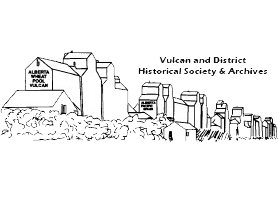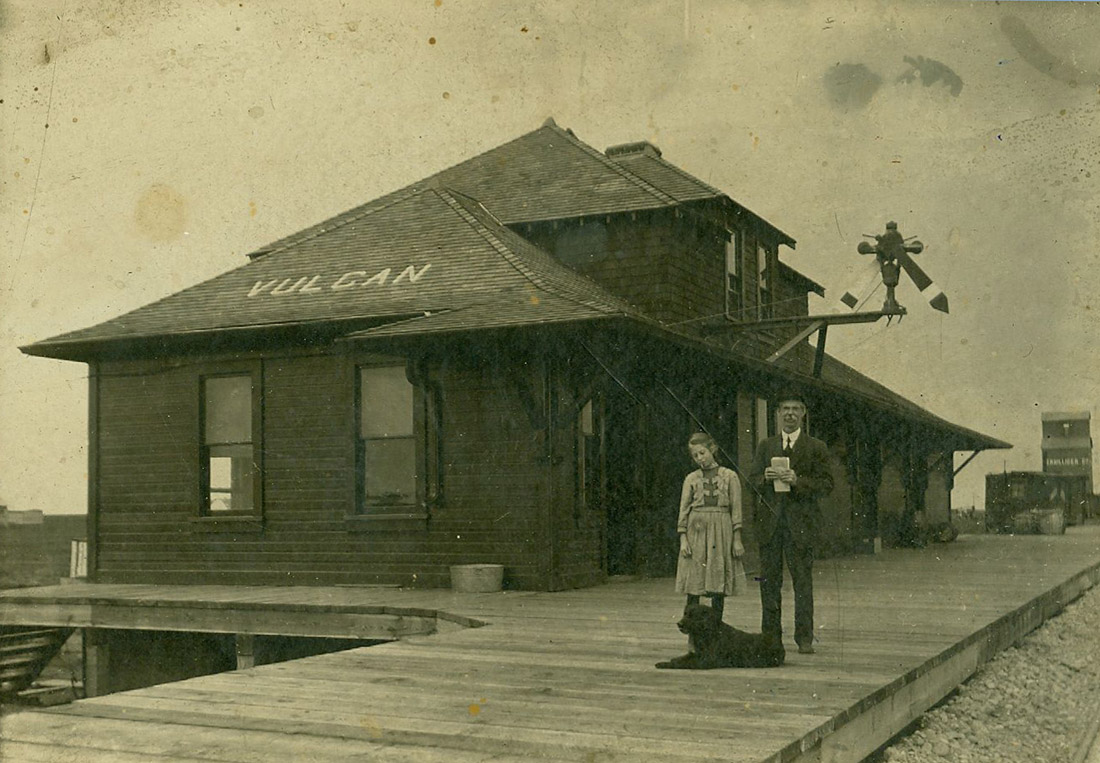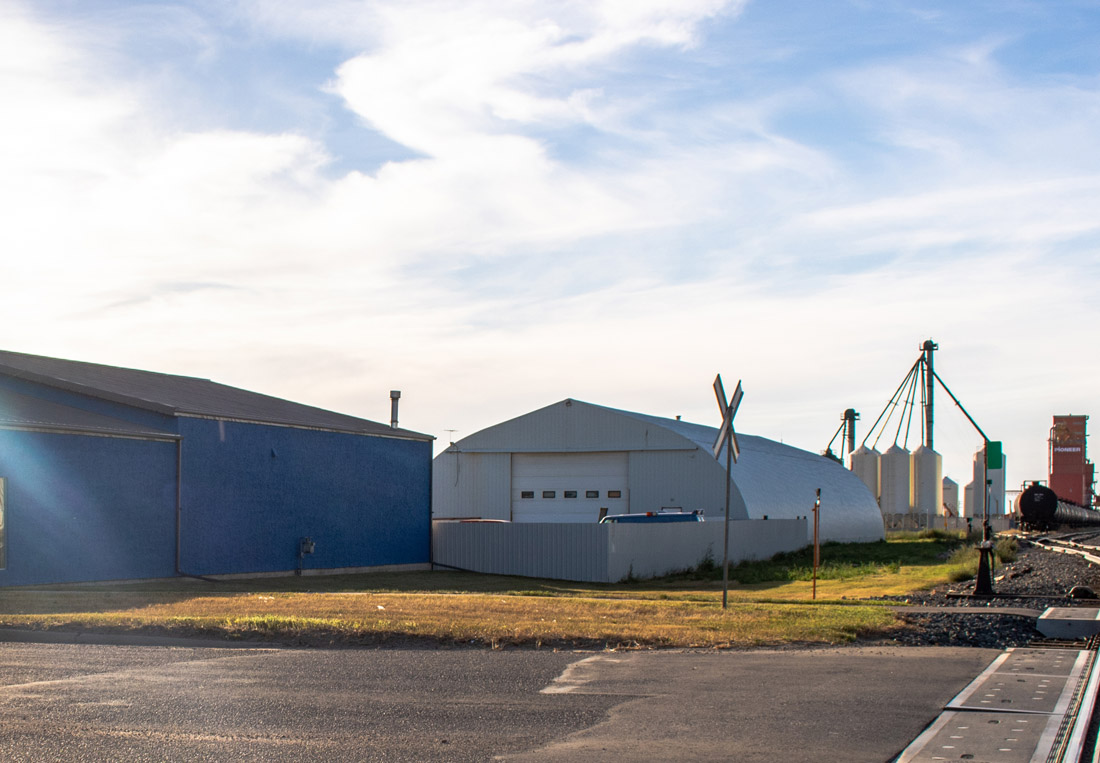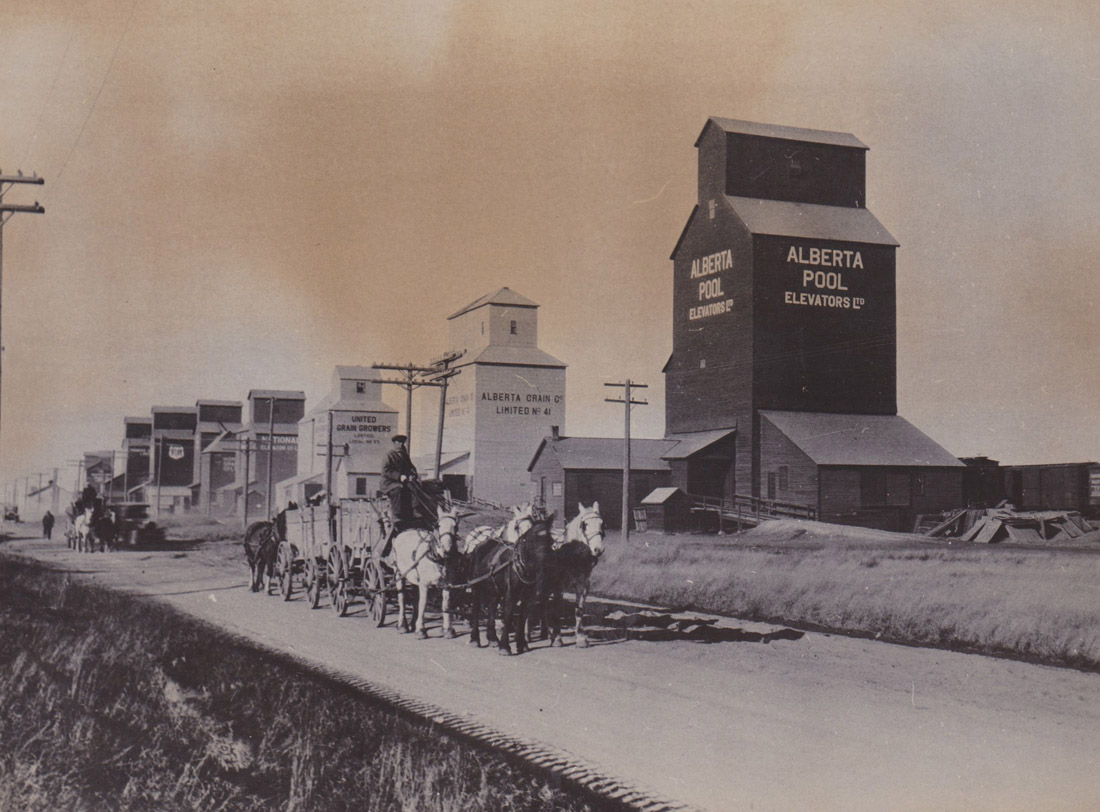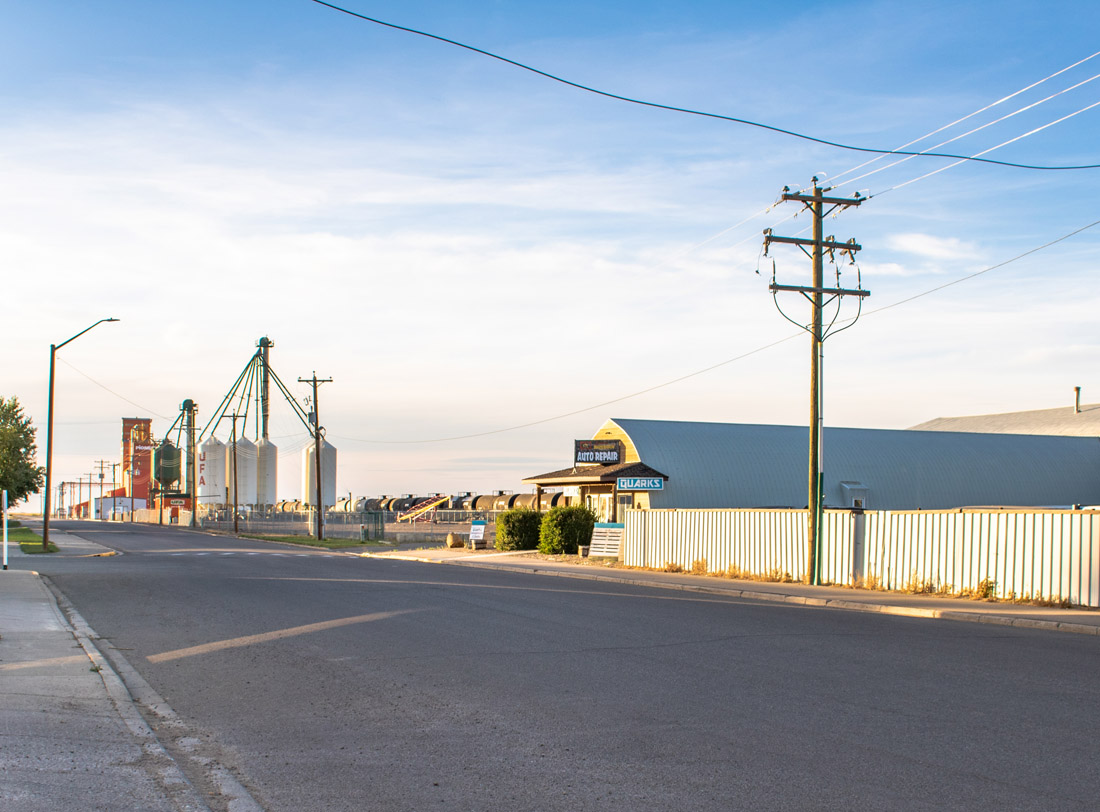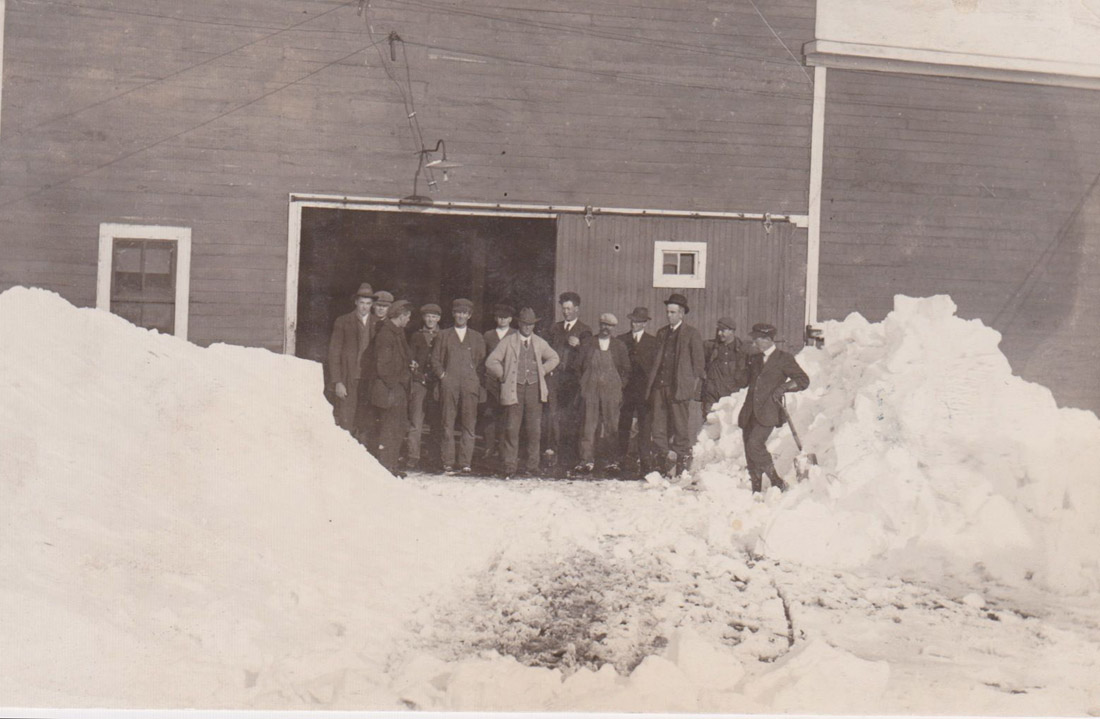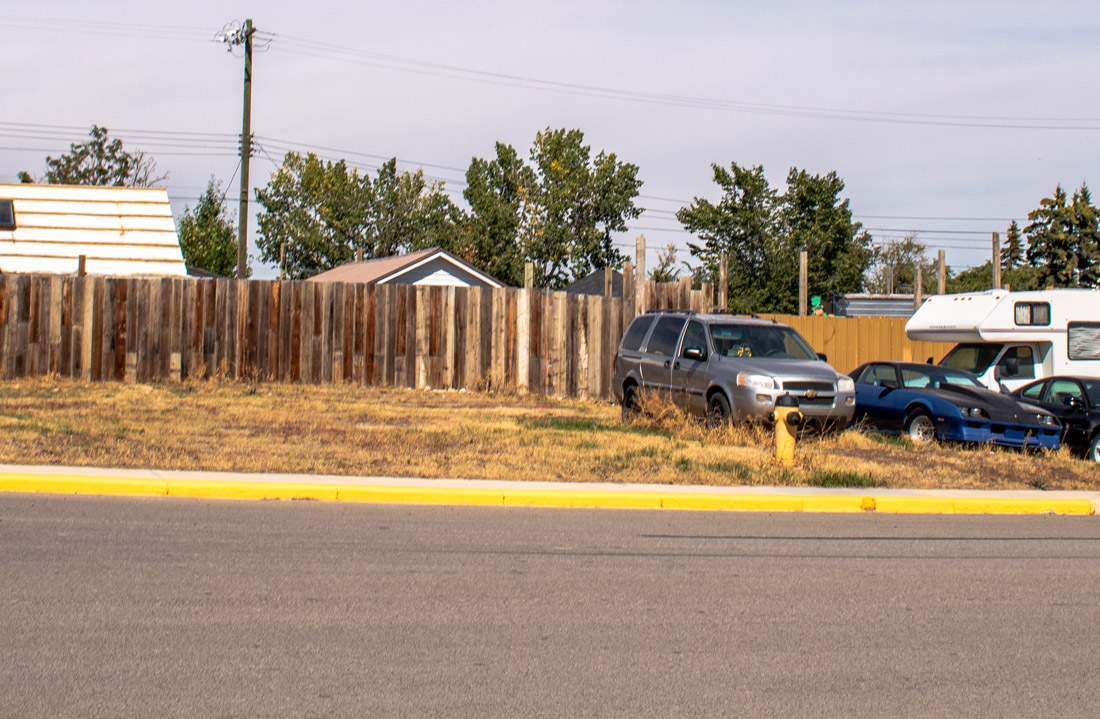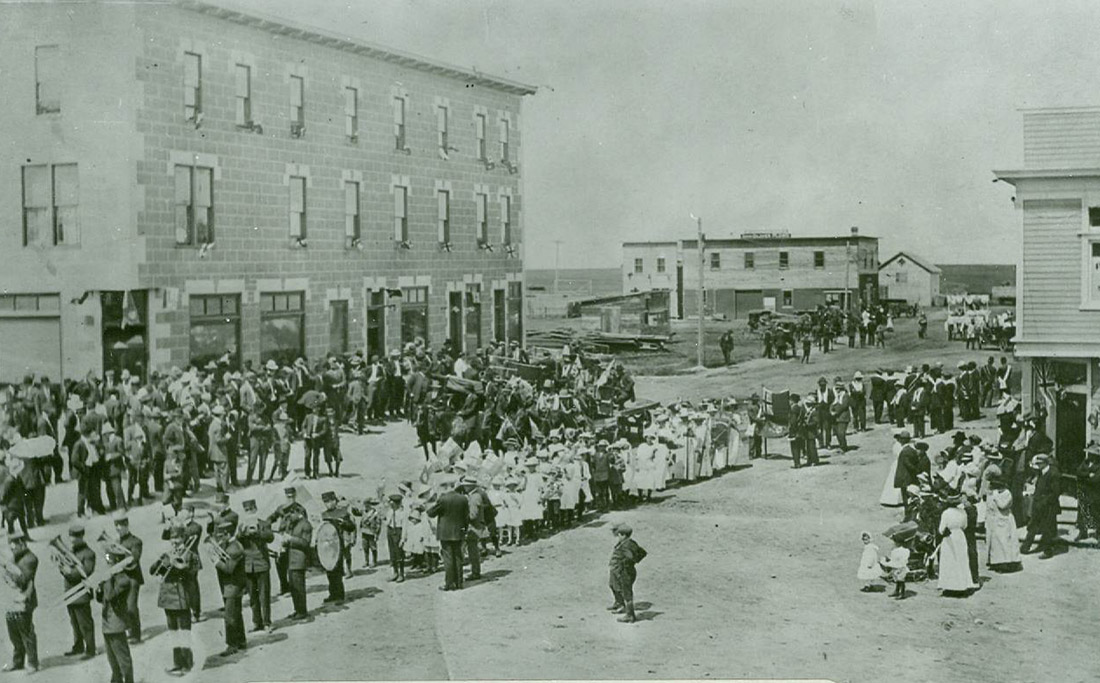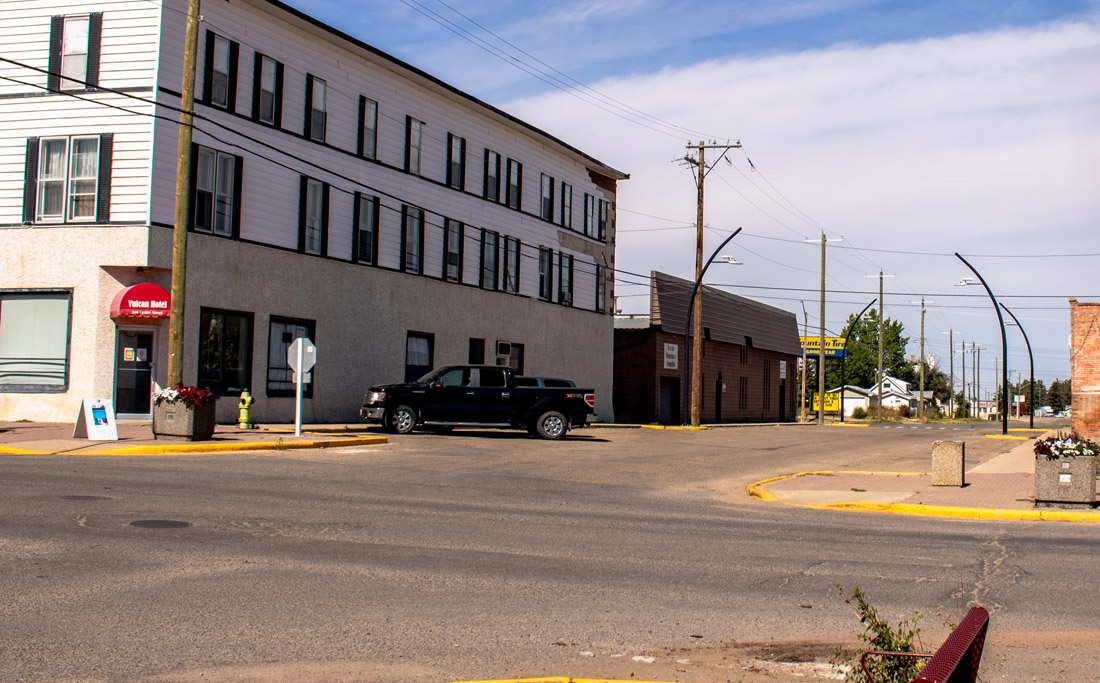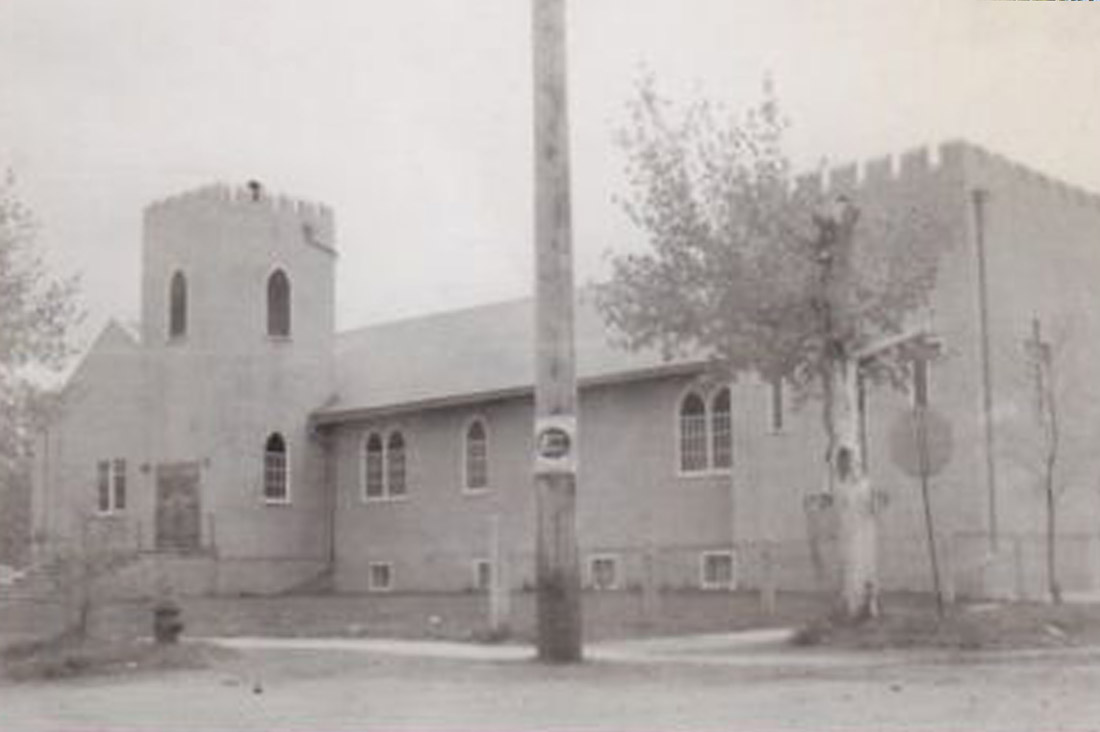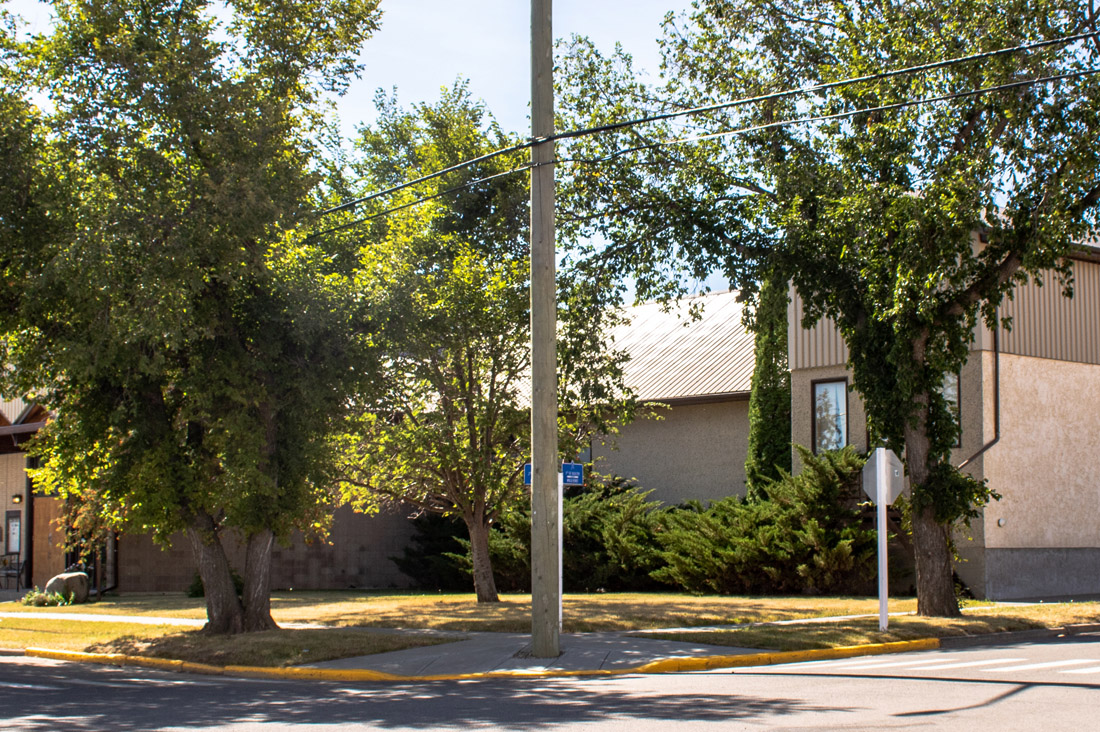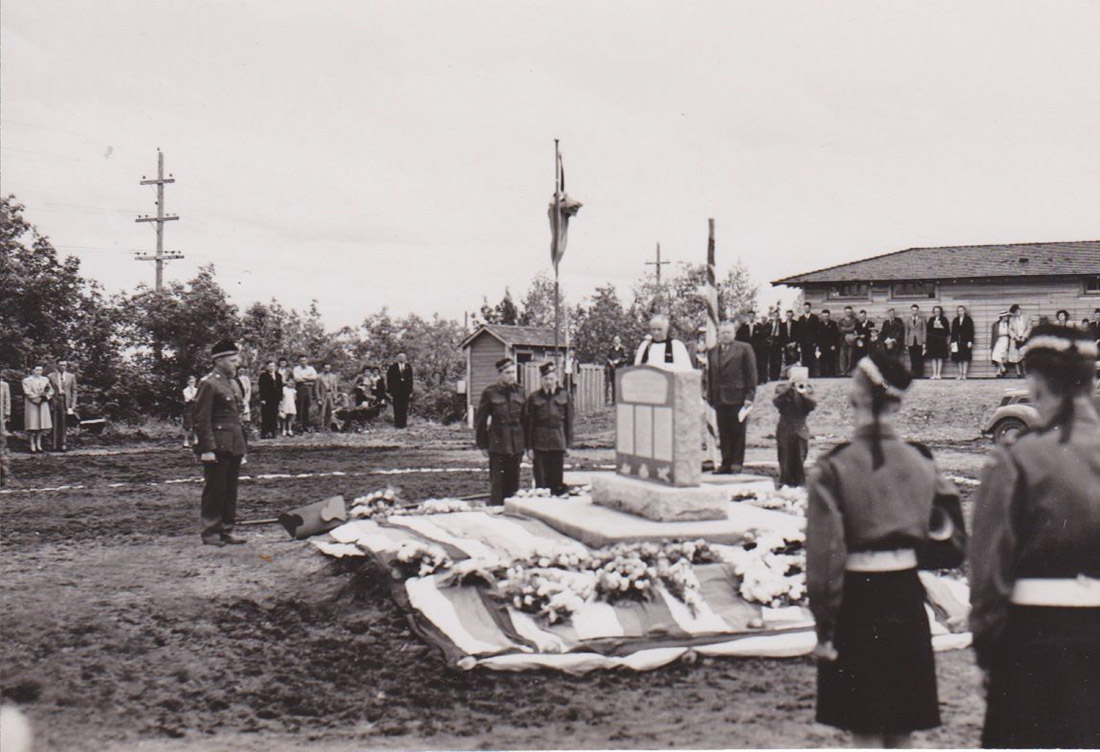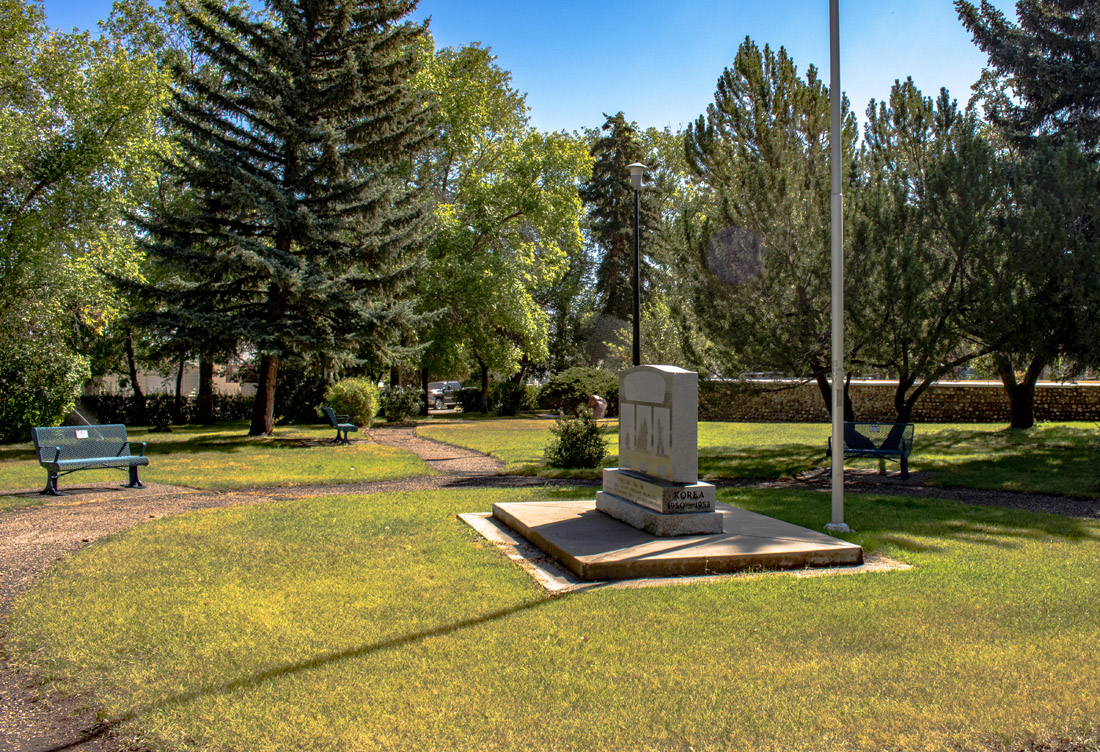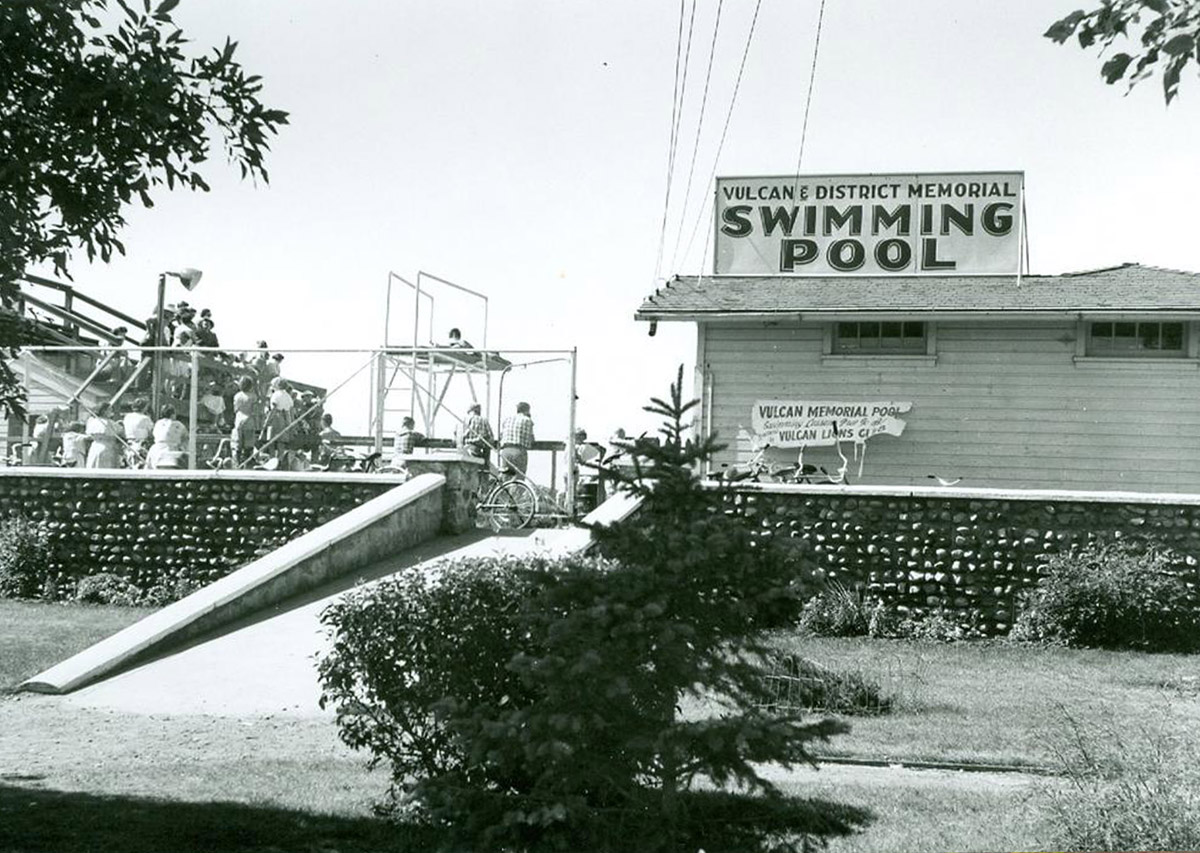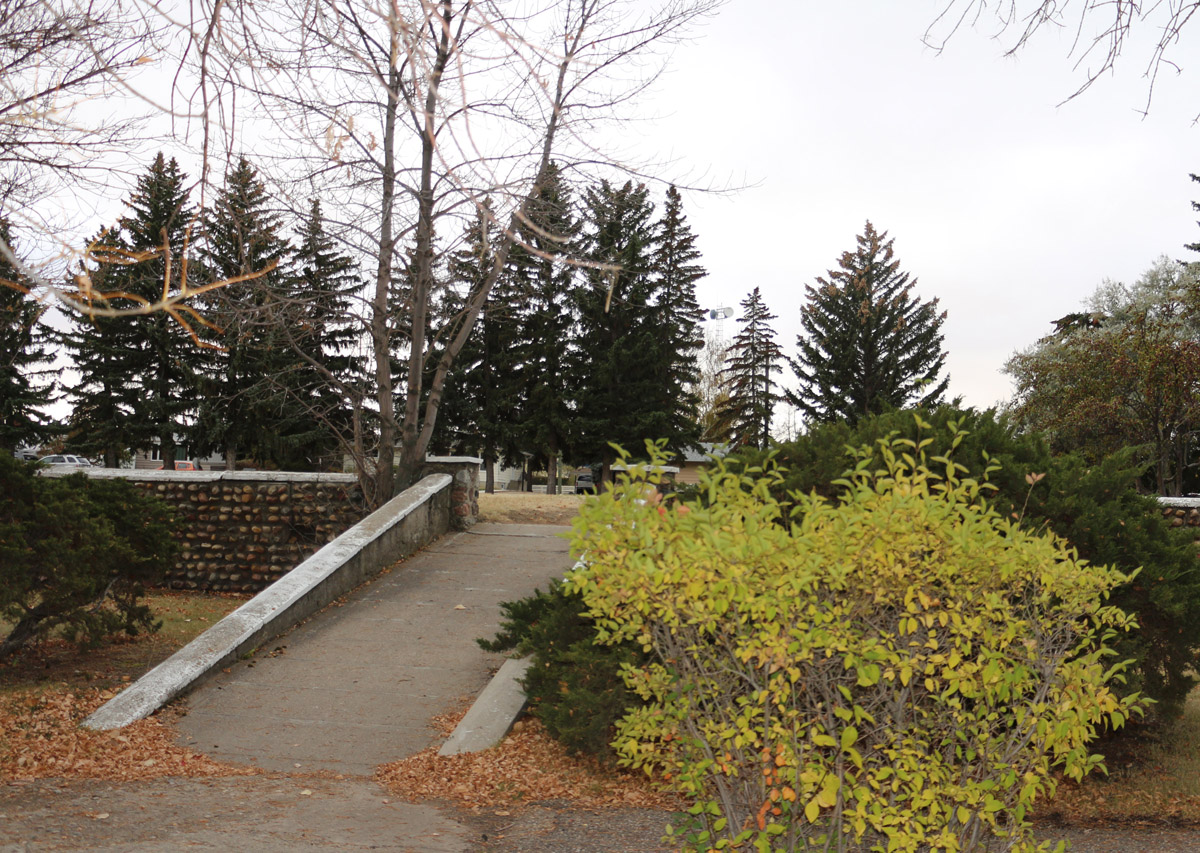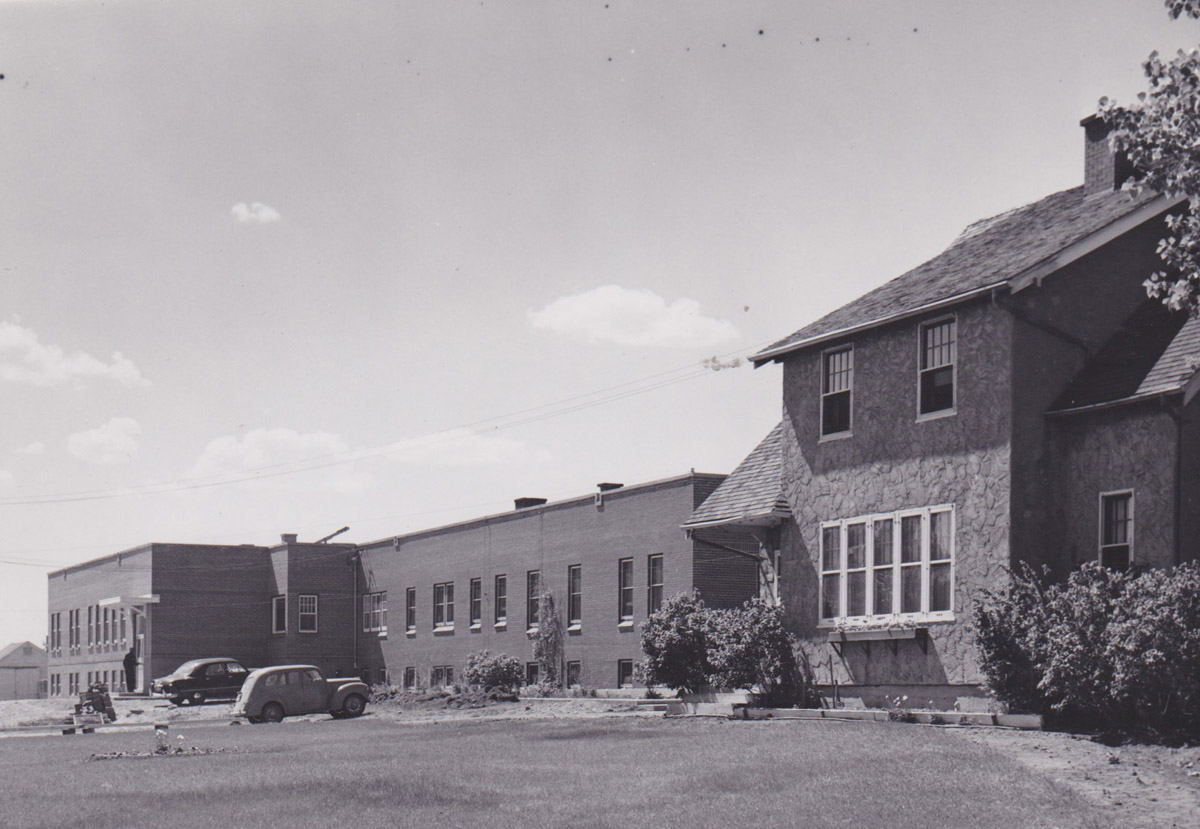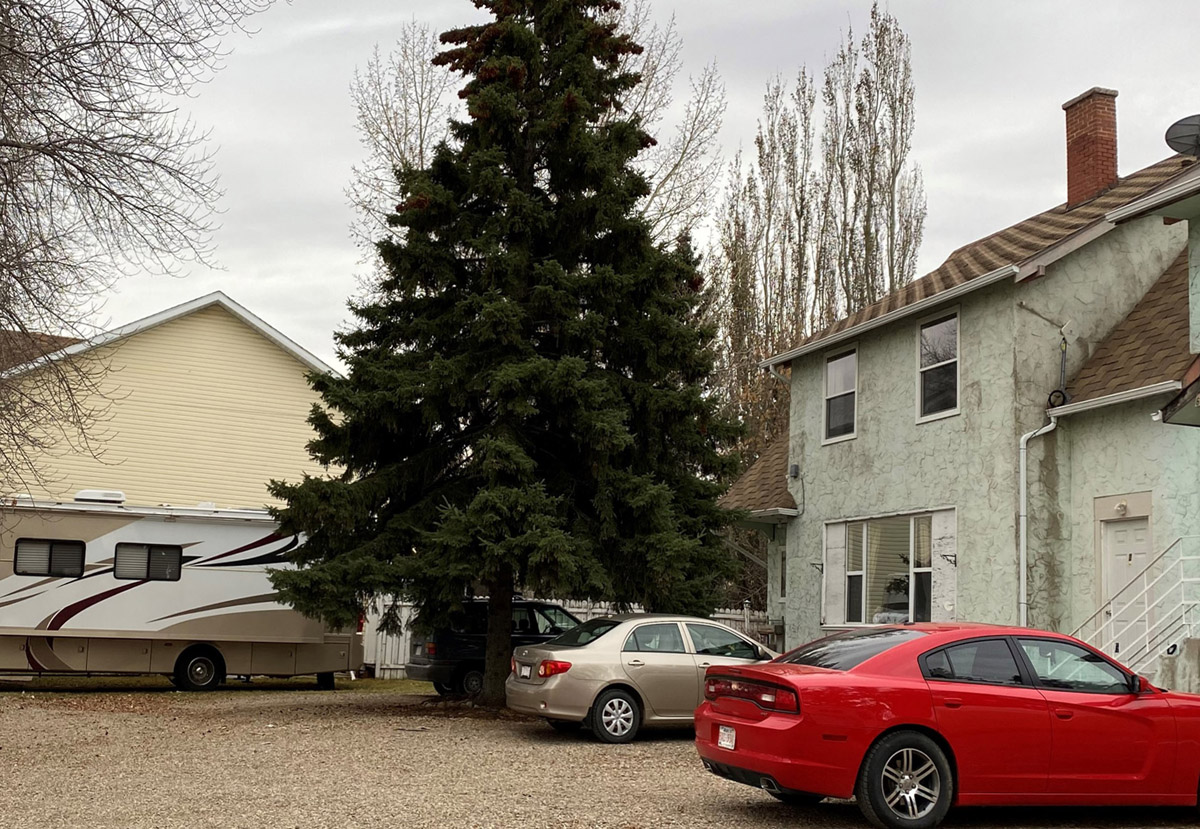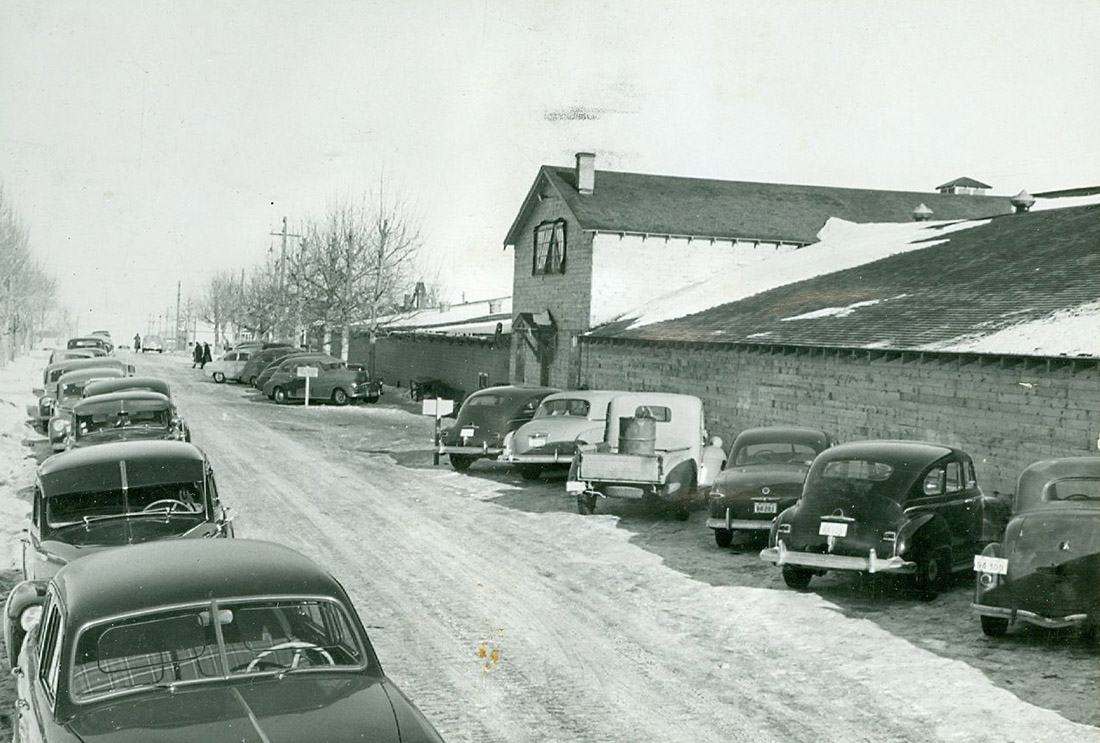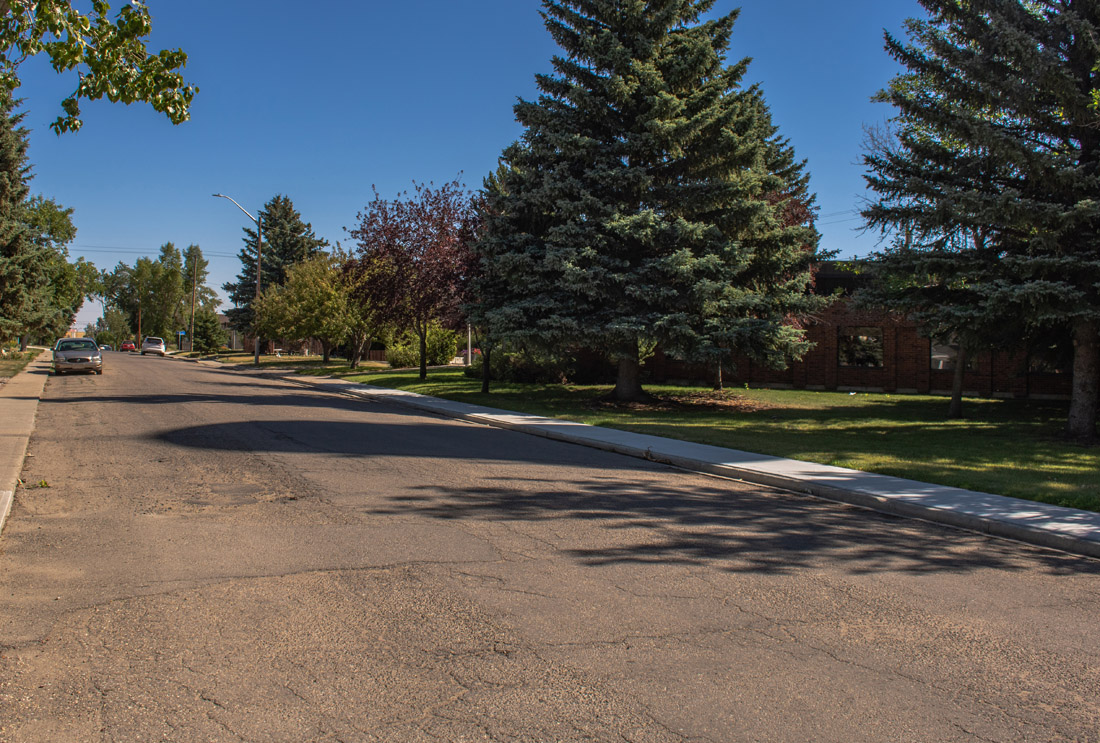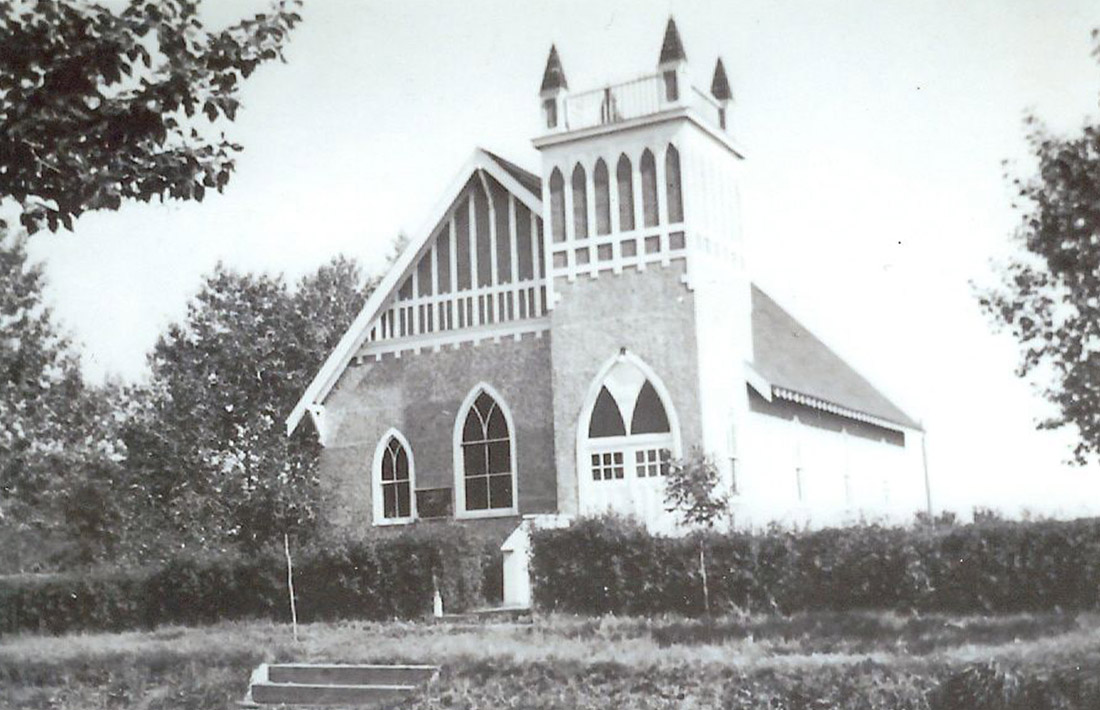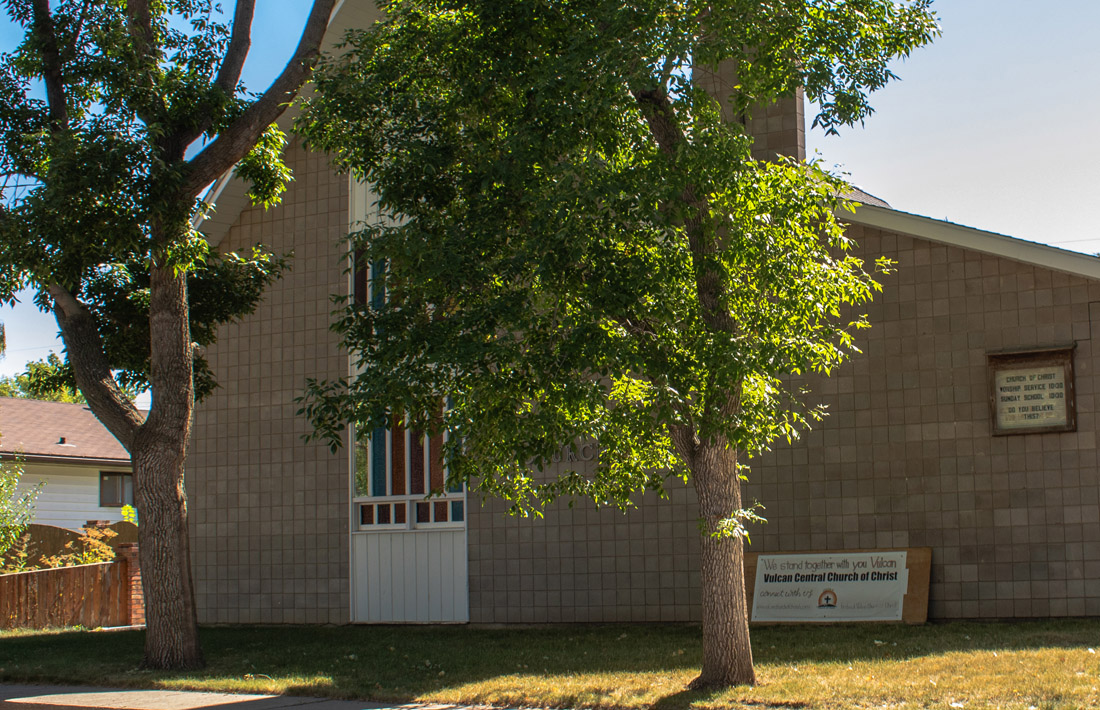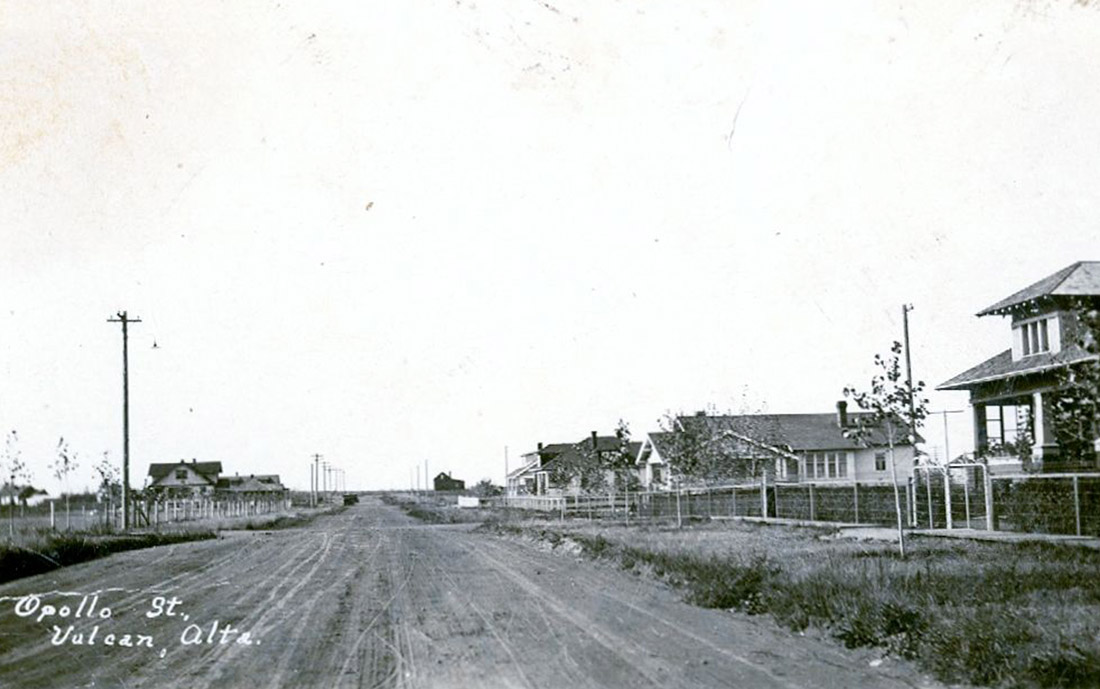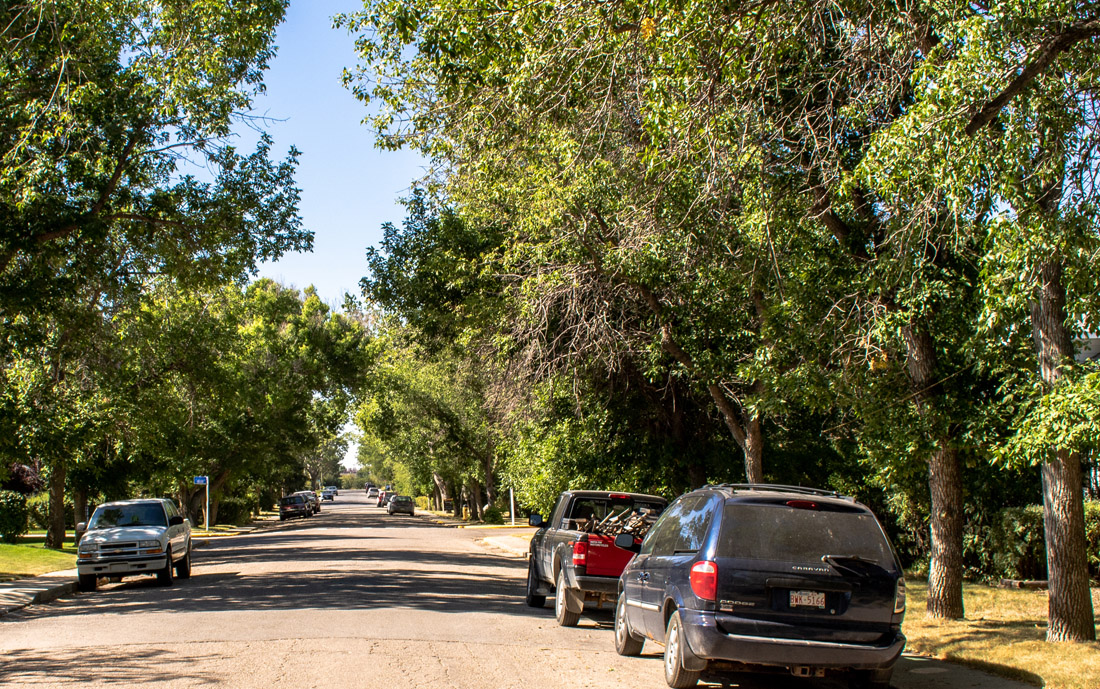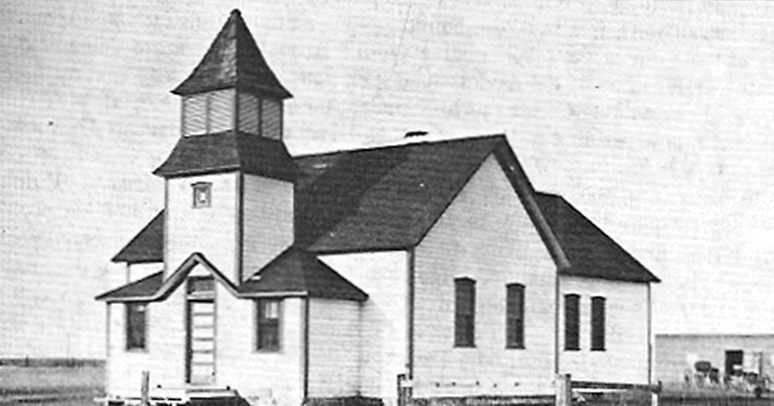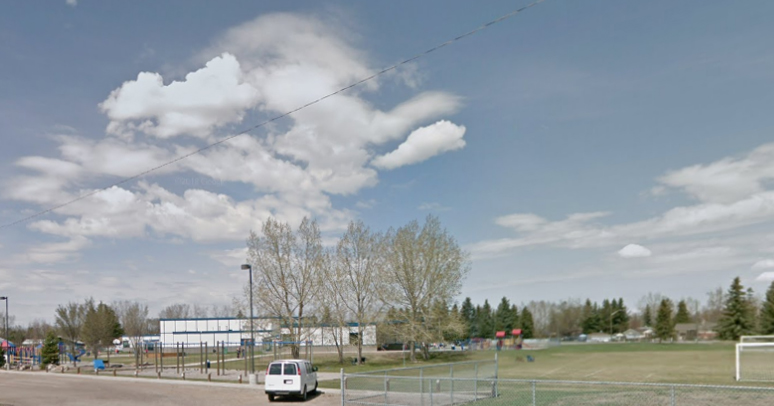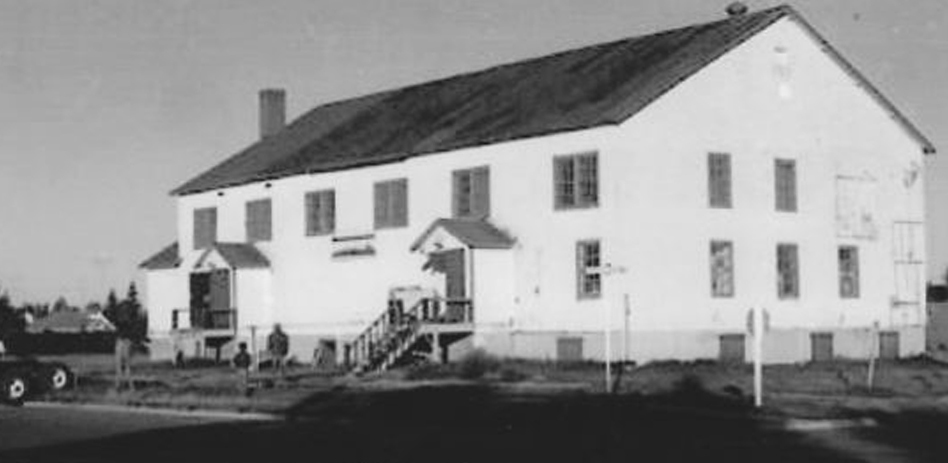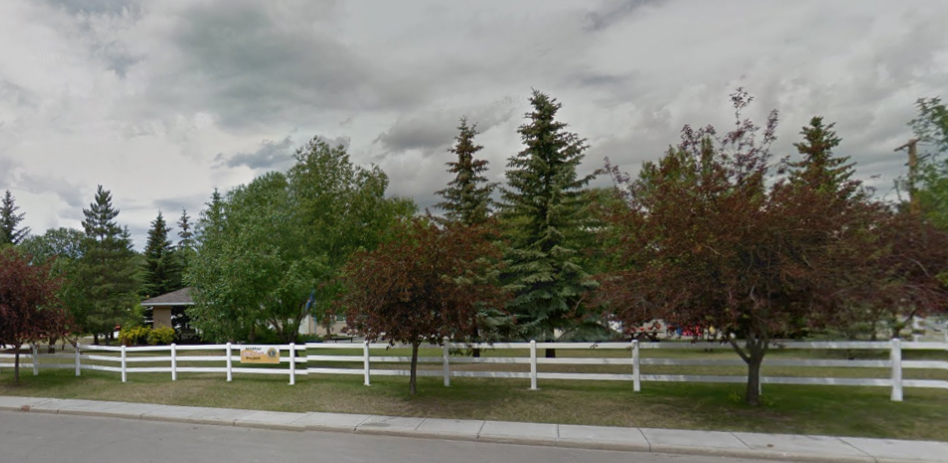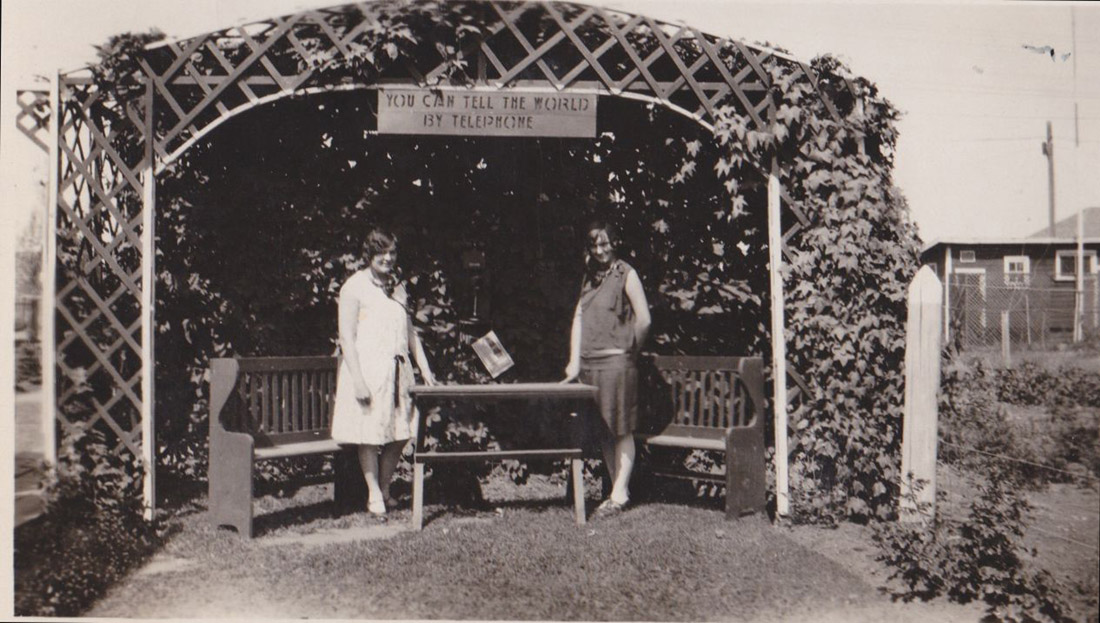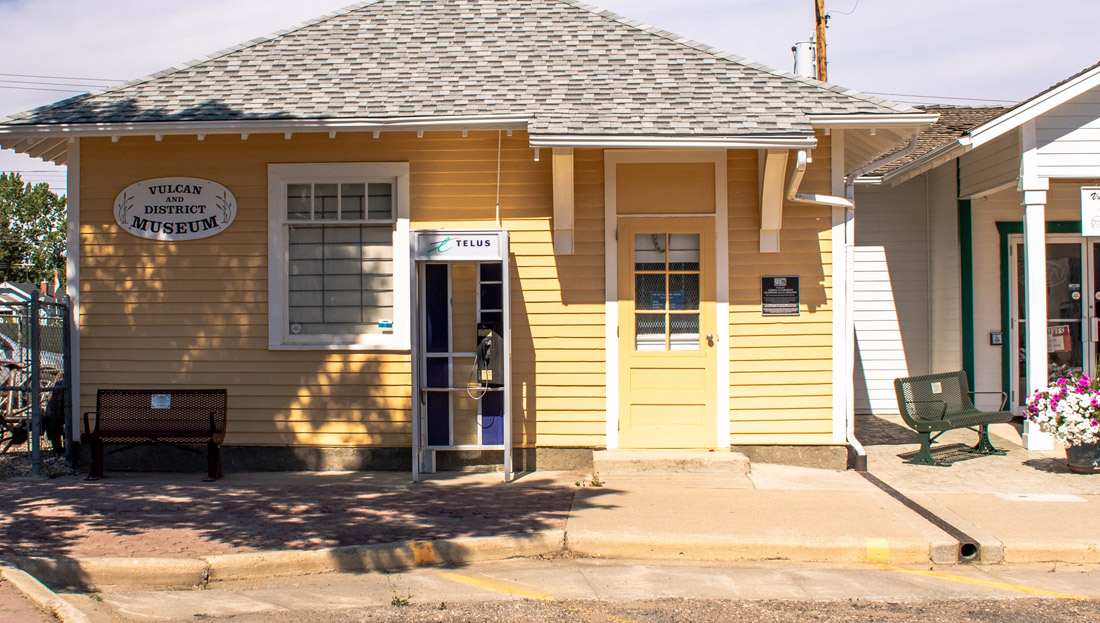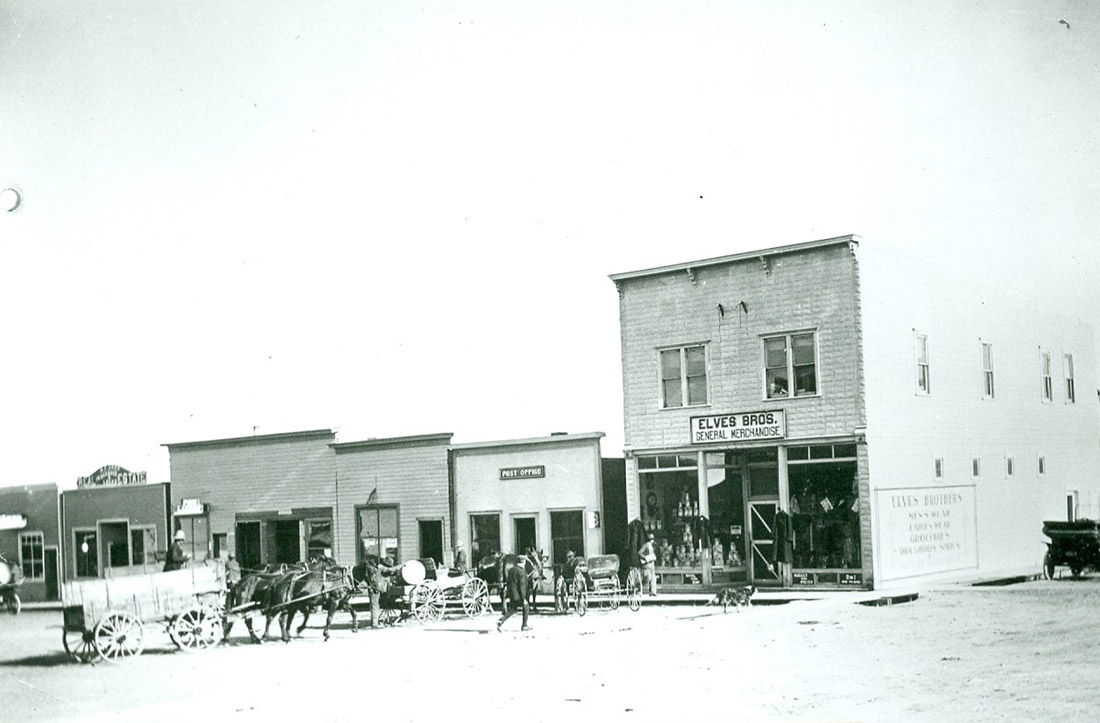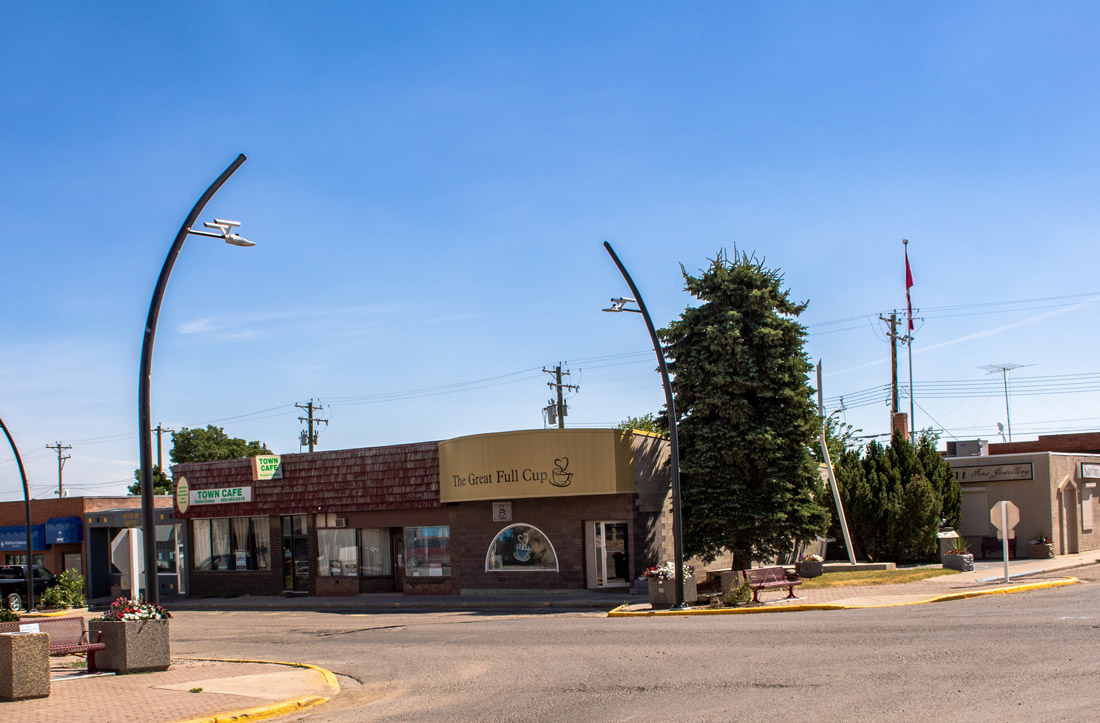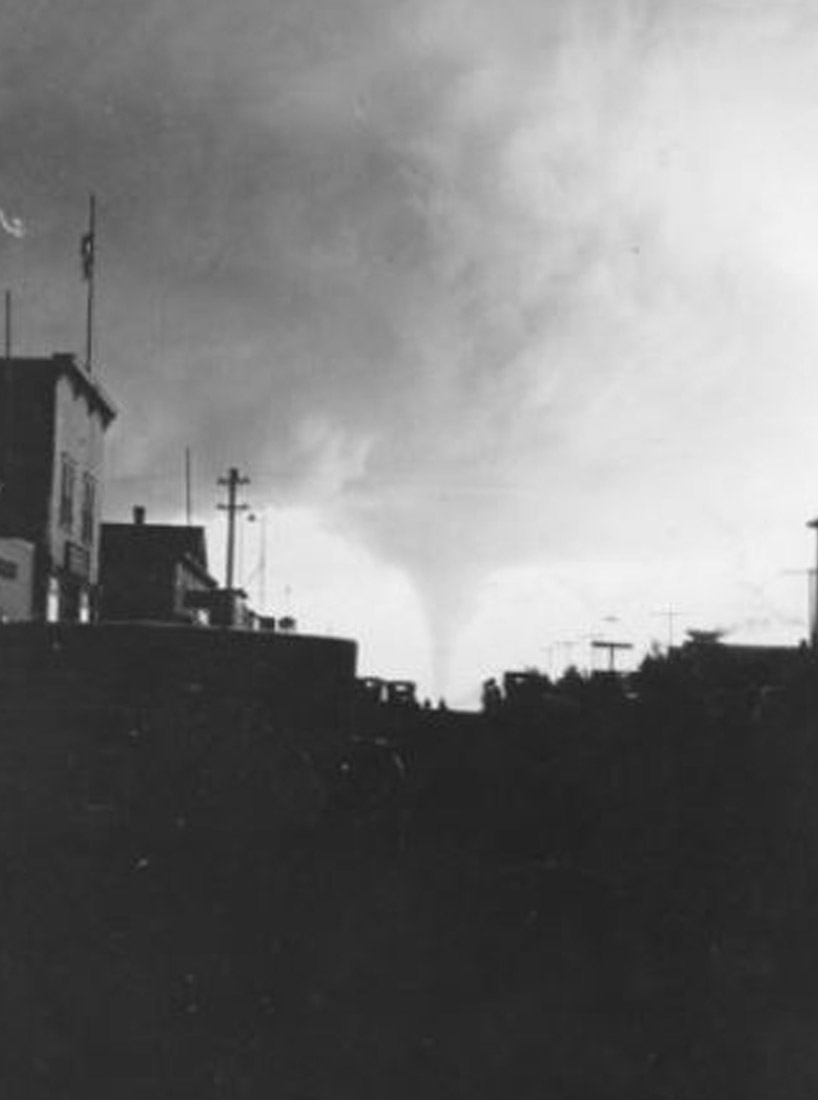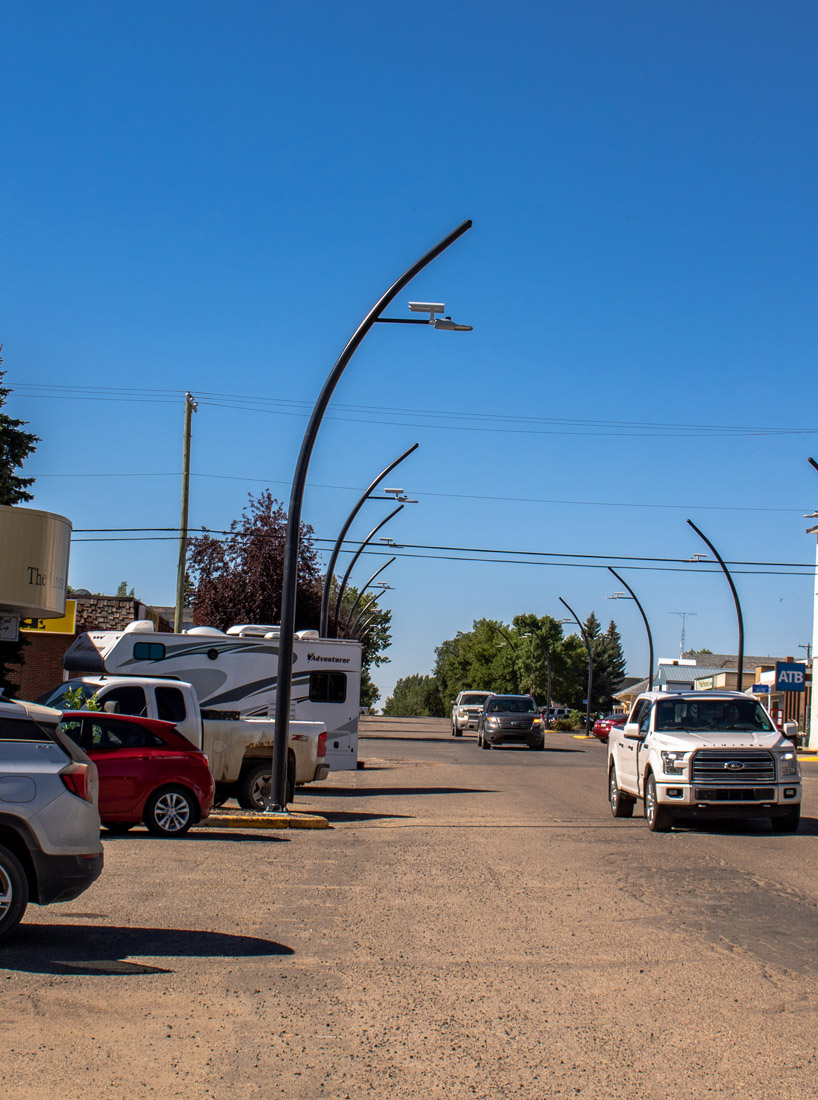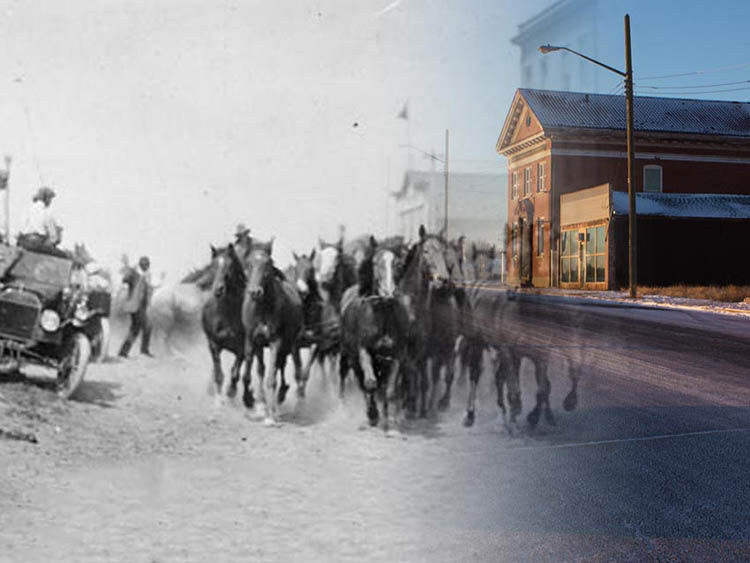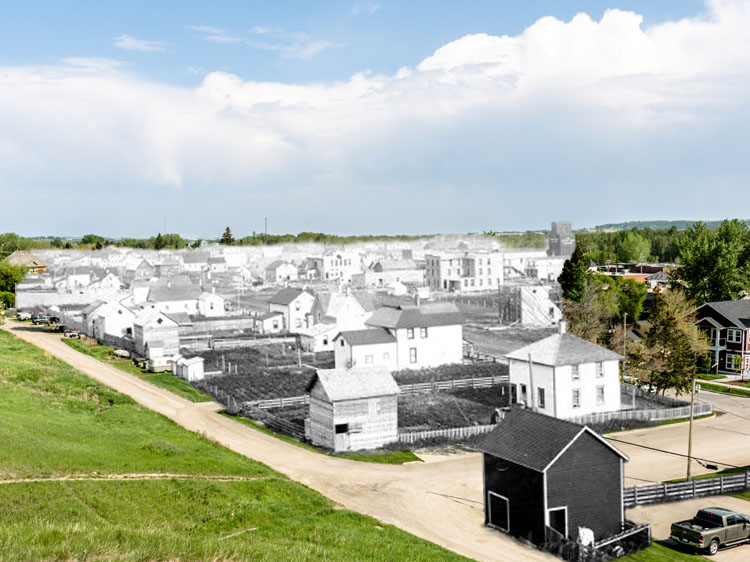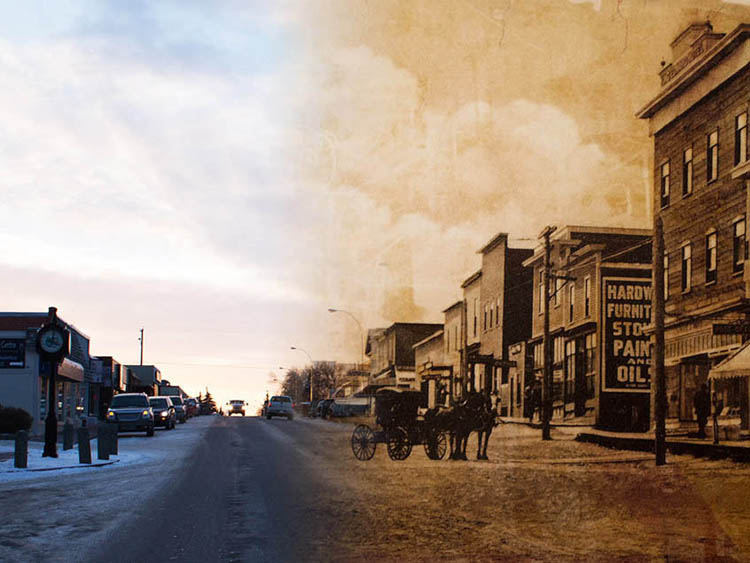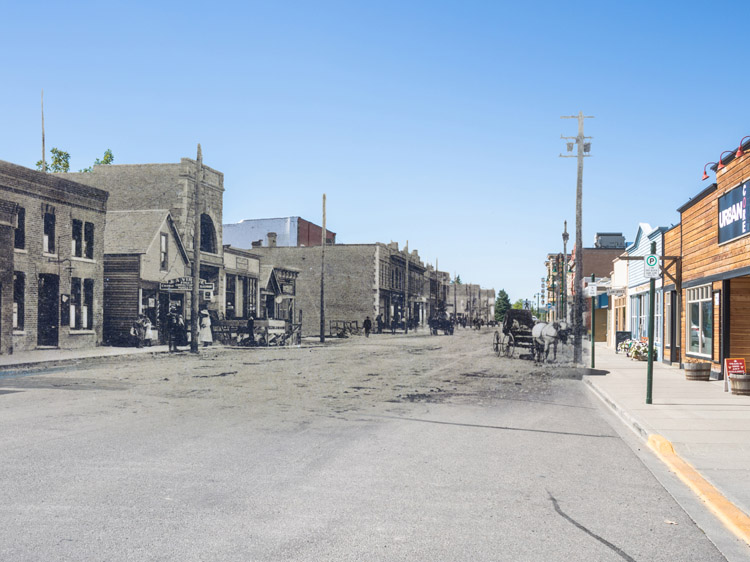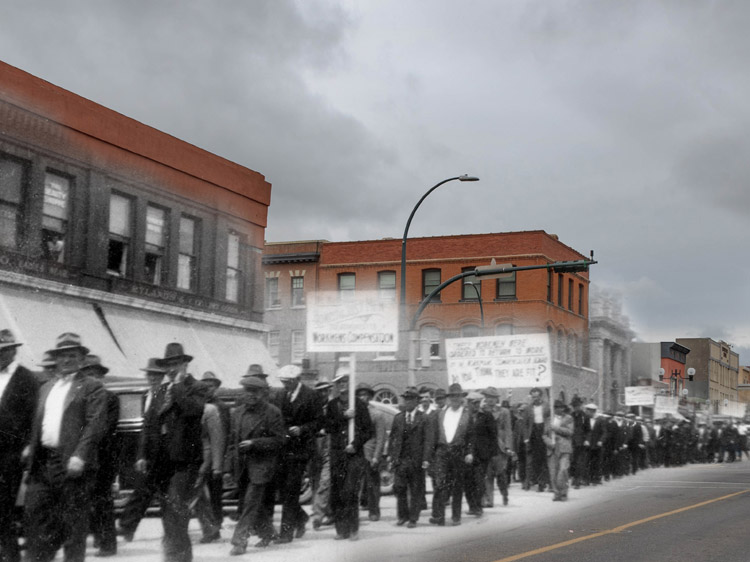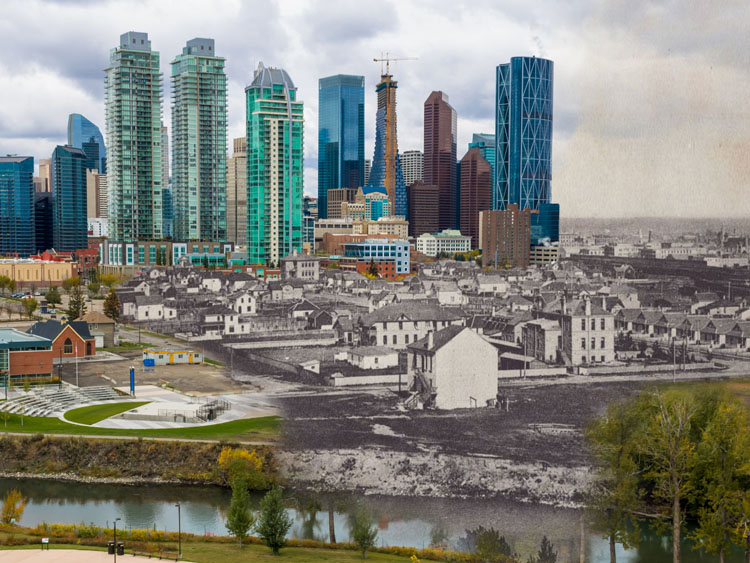Walking Tour
Living Long and Prospering on the Prairies
Vulcan in the Pioneer Era
Elyse Abma-Bouma
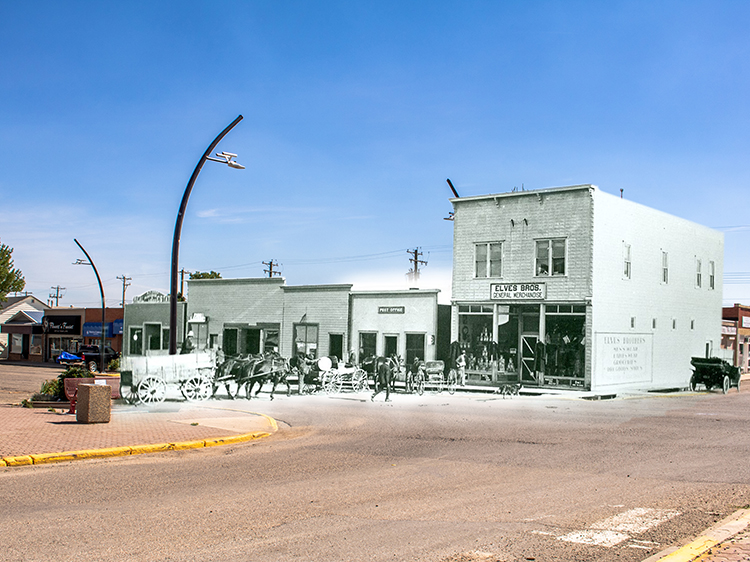
Vulcan & District Historical Society P-001-000055
When a CPR surveyor chose the name Vulcan for a little village on the prairies, he could not have known the legacy that would come a century later. While the town is named for Vulcan, the Roman god of fire, today the word 'Vulcan' is mostly associated with the home planet of Spock, from Star Trek. The legacy and history of the town of Vulcan is related neither to ancient Roman mythology nor to the far reaches of space. Its true history is a beautiful woven tapestry of culture, story, land, and people.
Prior to being known as Vulcan, this place was home to Siksika, Kainai, Piikani, Stoney Nakoda, and Tsuut'ina First Nations (among others). For millennia, the land you now stand on, stretching as far as you can see, was traditional territory for ceremony, bison-hunting, travelling, story-telling, trading, celebrating, and teaching. Remembering what was once in this place is an important exercise in respecting the land and space that we occupy in the world.
We are on Treaty 7 territory, a shared place that we've only called home for a short time in the historical record.
Close your eyes and imagine the quiet of the prairies. Hear the grass rustle. Feel the ground rumble as bison run in the distance. Breathe in the smell of the dust and grass. Remember what once was as we move through time on this tour.
This tour takes a short walk around downtown Vulcan, exploring places that were key to our town's history. We'll learn about the coming of the railway, the importance of agriculture to Vulcan, and the town's contributions to war efforts during the Second World War. We'll also learn about some buildings that are long gone and witness the dramatic changes that have shaped Vulcan.
Update: The tour now includes interviews with longtime residents of Vulcan that were recorded by Bev Knutson of the Vulcan & District Museum.
This project is a partnership with the Vulcan & District Historical Society.
1. A Train Comes to Vulcan
Vulcan & District Historical Society P-038-001673
In this picture, Mr. T. Sadler, Vulcan's first station master, his daughter Winne, and their shaggy puppy await a train at Vulcan's railway station. We can catch a glimpse into how instrumental the railway really was in the formation of the Vulcan community.
Standing alongside these tracks, looking out towards the grain elevator in the distance, you might not think that this particular location is anything special. However, the building of this railway changed the landscape of this place forever, creating a community of settlers that still exists today.
Audio Story 1: Alan Gorzizta on Living in the Train Station.
Audio Story 2: Louise Schmidt on the Train Station.
* * *
Ranchers and homesteaders started settling the Vulcan area as early as 1883, after bison were hunted to near extinction and the Blackfoot people were ravaged by smallpox and scarlet fever epidemics. When Treaty 7 was signed, the Canadian government wasted no time sectioning off land to give away to European settlers. However, it was not this free land that would allow new settlers to thrive in the West. It was the railway.2
Across the prairies, towns, settlements, villages, and hamlets began to pop up throughout the early twentieth century. Some burned bright and fast and others held on for a long time, but the sure indicator that a town would survive was the arrival of the railroad.
In 1912, the CPR finally blessed Vulcan with the gift of a railroad when it decided to build a railway network connecting towns in Southern Alberta. The arrival of trains meant that more settlers arrived, farmers could ship their crops quickly and effectively, and shops had better access to stock to sell the community.3
2. Nine in a Line
Vulcan & District Historical Society P-051-002885
Grain elevators are a feature of the Canadian prairies. One expects to see these country skyscrapers on any drive through the seemingly endless fields. Only one of Vulcan's iconic "Nine in a Line" grain elevators still stands today, as a symbol of Vulcan's agricultural heyday.1
Audio Story 3: Roy Hagg on the Grain Elevators.
* * *
Seeing an opportunity to better educate farmers about crop variety, the Canadian Pacific Railway, along with the federal and regional governments, sponsored "mixed-farming trains." These trains would tour the prairies, showing local farmers in Vulcan and other agricultural communities how a diversity of crop strains could make the hard years less difficult and the good years more prosperous. The Mounted Police reported that in Vulcan, the arrival of the traveling education train would attract an enthusiastic throng of 200 farmers hoping to broaden their agricultural knowledge.3 There was also a CPR Demonstration Farm east of Vulcan to continue the education of these farmers.
Grain elevator technology came onto the scene in the early 1900s, shortly after the arrival of the railroad. Growing and harvesting crops was only half the battle for early farmers in Vulcan. The second part of the equation was selling the grain. When all your neighbours grew grain, they weren't very likely to buy thousands of bushels of the stuff from you. Exporting the grain was the obvious solution, and there was an endless demand for the foodstuff in Canada's eastern cities and the crowded metropolises across the Atlantic. Trains could get the grain to where it was needed, but there was still a conundrum: how would the grain be stored until the train could come?
A grain elevator meant that farmers could harvest when the time was right and safely store their goods until the train came to pick it up. Now Vulcan could rest easy knowing that their most precious commodity was safe and sellable.4
3. The Snow Couldn't Stop Them
Vulcan & District Historical Society P-048-002410
Anyone from the prairies can tell you a snowstorm story. Blizzards, snow drifts, and frigid temperatures are a hazard throughout the western provinces, and Vulcan is no exception.
In this photo, a group of men pose outside of a local barn, regardless of the snow that surrounds them.
Audio Story 4: Louise Schmidt on Blizzards.
Audio Story 5: Louise Schmidt on the Ladies Restroom.
* * *
Today, we have the technology and established shelters to survive most blizzards, but for early residents of Vulcan and the surrounding area, blizzards and snowstorms often caused ranchers to get trapped in fields and disoriented, or stranded travellers in their wagons as they struggled to stay warm. The cold presented a unique challenge to early Vulcanites with minimal heating technology, especially when exposed on the great prairie. In 1906-1907, the Vulcan area experienced a "bitter cold" winter that eviscerated open ranches and left cattle across the prairies dead from starvation.2
It was not only the cattle that winter sometimes claimed as victims. Men would also get caught outside and, disoriented by a sudden blizzard, wander aimlessly, unable to find home or some other safe haven from the cold. Sadly, this was a common occurrence and an assumed risk faced by settlers on the prairies. 3
4. Prairie Hospitality
Vulcan & District Historical Society P-001-000038
1913
If you look across the street, you can see the hotel that was once called the Imperial Hotel. This photo was taken on a festive occasion, when people assembled for a parade through the little town. There was a marching band, and children in white outfits all waved Union Jack flags. It was Dominion Day, July 1, and the people of Vulcan were celebrating their loyalty to Canada and the British Empire. Most of Vulcan's citizens at this time had been born in Britain, after all.
* * *
Mary and Herbert Darby came to Vulcan to continue their work at the Imperial Hotel with their three children, Lou, Eva, and Dick. The hotel finished reconstruction and opened its doors in 1912. Herbert Darby continued to work at the hotel as a cook and the Darbys rebuilt their life in Vulcan after the Frank Slide.2
Herbert Darby was born in the United States and made his way to British Columbia sometime prior to 1902, which is when he met Mary Lewis. They married and moved to Blairmore, where they met Mr. Mutz, the owner of the Imperial Hotel. The Darby family was likely one of the first Black families to settle in Alberta. A few years later, around 1908, an influx of Black settlers travelled to Alberta from Oklahoma.3
When the Jim Crow South was rising, many Black landowners in Oklahoma were forced out due to a persistently racist society and laws. Upon seeing advertisements for vast stretches of land in Alberta that awaited farmers, many fled Oklahoma in the hopes of finding a warmer welcome or, at the very least, less discrimination. Unfortunately, they were met with neither. By 1912, Black immigration from Oklahoma to Alberta had all but stopped thanks to a petition from white farmers containing 3,000 signatures, which petitioned to discontinue the immigration of 'undesirables.' Immigration agents went to Oklahoma specifically to convince potential immigrants that the Alberta soil was poor and they should not waste their time on such an endeavour.4
5. Social Importance of Churches
Vulcan & District Historical Society P-057-003810
As Vulcan residents Mr. and Mrs. Jamison once said, "The history of the United Church in Vulcan is synonymous with the history of Vulcan."1
Churches played an important role in small prairie communities such as Vulcan. Settlers and immigrants came in search of a new start, but the vast prairie could be a lonely place. New residents sought the comforts of home and building. A church afforded them the familiarity of the communities they'd left behind. Churches hosted services, programs, charities, and community events, offering spiritual and moral guidance and helping Vulcan develop a thriving society and community alongside its economic and land opportunities.
"...the annual Sunday School picnic, for which they chartered a special train was [in Vulcan] declared a holiday."2
Audio Story 6: Allen Giles on the United Church.
Audio Story 7: Glen Graham and the United Church.
* * *
The first ordained minister arrived on the scene in October of 1910. Initially, services were held at the School but moved around to other venues including the Kothlow & Shimp Hall, Elves Bros. Hall, and Richardson's Hall before money was raised to build the United Church building on this site in 1916.
The church congregation went through many changes together, from the Spanish Flu that kept them under quarantine for fifteen weeks, to the Great Depression which left many congregants poor and afraid. Nevertheless, the United Church continued to provide for the people's spiritual needs. Early Vulcanites even remember the early sermons that would leave everyone wondering "if you could keep from going to hell before you got the chance to go to church again"! But they did return every Sunday for more fire, brimstone, and Sunday School Picnics. 2
6. The Grim Toll of War
Vulcan & District Historical Society P-051-002829
A somber ceremony at Vulcan's cenotaph, as the names of the town's sons who fell in the Second World War are unveiled. Though a world away from the battlefields of Europe, the world wars scarred Vulcan. While the Second World War is more vivid in the Canadian popular memory, the First World War reaped a far heavier toll.
The trauma of the First World War ravaged every community across Canada, but it was the prairies that were hit hardest. Even though the prairies represented less than a quarter of Canada's population in 1914, over half of the army's volunteers came from there. This was because a huge share of Canada's prairie homesteaders were British born and fiercely loyal to King and Empire. In the end, over 60,000 Canadians would die in the First World War, and a huge proportion of them came from little prairie towns like Vulcan.1
Audio Story 8: Louise Schmidt on the Memorial Park.
* * *
Enlisting came with many unknowns. Would you be crawling through trenches? Soaring over battlefields in an airplane? Caring for the injured in a military hospital? Another Vulcan resident, Ken McLean, had no idea what he would be in for when he joined the army. Faced with the fear and excitement, he ventured forward for training. Alas, his military career was cut short when an injury kept him in Vancouver for the duration of the war as he watched fellow soldiers come and go. Not all soldiers who enlisted were sent into battle. Instead, many were tasked with waiting in the wings, hoping their friends would make it home.3
The realities of the war reach far beyond the death toll. Those who survived came home with psychological and physical damage. Many lost limbs, eyes, and their mental health while serving. Because most of those who enlisted were men, the women in small communities such as Vulcan were left with double the work when their husbands, fathers, and brothers enlisted. Then, when their families were reunited, women often faced the new challenge of caring for their loved ones' disabilities and psychological trauma.
7. The Swimming Pool
Vulcan & District Historical Society P-010-000517
When the Lions Club built a swimming pool in 1945, swimming was already a long established leisure activity in Vulcan.
"A 'swimming hole' at the Little Bow River was greatly in use prior...it has been told [that] there was [also] a very popular spot down by the elevators." 1
* * *
As Vulcan grew and became more established, residents prioritized the building of schools and churches to foster a strongly religious and educated community. The small village that had been completely consumed with economic gains and producing a viable crop began to further establish its social institutions.Social gatherings then called for more activities, and Vulcan began to build skating and curling rinks, clubs, fraternities, women's institutes, and swimming pools.
"We did have good times living here in Vulcan -- fishing at Lake McGregor; horse racing at Brant, Vulcan, Cayley, High River and many times on the roads by our home; the games of baseball, horseshoes; water fights; Easter eggs hunting; candy making, and many more things like meetings, concerts, dances, etcetera."3
At the start of Vulcan's history as a town, its residents likely had a hard time imagining that they would one day have an indoor skating rink or a church building—or even a swimming pool.
8. The Old Hospital
Vulcan & District Historical Society P-051-002883
The story of how Vulcan came to have a hospital is a unique one, to say the least. In 1917, Cora Rinehart, who had a certificate from the Chautauqua School of Nursing in Chicago, was urged by a nearby doctor to start a hospital, and that is just what she did. Miss Rinehart opened a four-bedroom cottage for complicated deliveries and minor surgeries such as tonsillectomies, when a patient's tonsils would be removed. The hospital had no electricity or running water, so surgeries were done by the light of oil lamps and water was hauled in by the barrel for deliveries. Miss Rinehart, along with a handful of other nurses, ran the four-room hospital until 1928, when she fell ill.1
* * *
"Regular train service was suspended during this epidemic and patrons were even requested to wear masks when they were at public gatherings. The town finally passed a by-law permitting only five persons to gather at any one place during the epidemic."2
Shortly after the Spanish Flu ended, Mrs. Morton opened a nursing home, which was quickly renamed the Vulcan General Hospital. As the town grew, so did its need for hospital beds. Out-buildings called "Pest Houses" were constructed to control smallpox outbreaks, and by 1927 Vulcan had voted to expand the hospital.
"When completed, the hospital at that time had 15 regular beds and five extra if needed, a portable x-ray machine and two sterilizers… In 1942 the hospital became the proud possessor of a walk-in cooler for the kitchen, an incubator and a lab for which a technician was hired."3
Isolation houses continued to be used after smallpox for polio cases in the 1930s. These houses were most often run and maintained by women and used as quarantine spaces to keep diseases from spreading.
"Burning of sulphur on top of hot stoves, and other forms of fumigation of homes, was a smelly and difficult task as every crack had to be plugged."4
9. Leisure and Sport in Vulcan
Vulcan & District Historical Society P-004-000261
Curling has deep roots in Canadian culture and Vulcan is no exception! As you can see in this photo, the curling rink was an active recreation center. Many of Vulcan's pioneers loved a good throw of the stone, and curling rinks were some of the first recreational buildings erected. The curling rink that once stood here was built in the 1916 and rebuilt after a cyclone tore the roof off in 1928.1
* * *
As Europeans pushed their way westward, they brought their love of curling with them. Eventually, curling aficionados built curling rinks to shelter from the harsh prairie winds. Next, leagues were formed and curling became an organized competitive sport.
By 1920, Vulcan had a women's and men's league, had expanded the two-sheet rink to three sheets, and had joined the Foothills Association which included Okotoks and Claresholm. The Vulcan leagues frequently brought home trophies and wins. In fact, in 1916 the club had just expanded to ten teams and had a competition. The stakes: the losing team had to buy everyone an oyster supper.3
10. Prairie Church Architecture
Vulcan & District Historical Society P-026-001042
The Vulcan Church of Christ was built in 1927 shortly after a Calgary missions board envisioned the project in spring of 1926. Prior to building, the congregation met in the Imperial Hotel and hosted nightly meetings at the skating rink. Over the years, more was added to the simple wood frame building, starting with a basement in 1928 and eventually becoming the building you see today.
* * *
The Church of Christ, like most early churches, was built exclusively using volunteer labour. While churches in bigger cities were often elaborate and complex, prairie churches were simple box-like structures with minimal artistic design. On the prairies, things were best kept simple so they could be completed quickly and efficiently. Practicality trumped taking liberties with design.
11. The Dust Bowl
Vulcan & District Historical Society P-045-001966
Looking down the paved, tree-lined Apollo Street today, it's hard to imagine what this space looked like a century ago. Back then, the land was barren and treeless, the flat horizon only interrupted by squat homesteads and little towns like Vulcan.
* * *
When the stock market crashed, Canada's Gross Domestic Product swiftly declined. The prairie provinces took the brunt of it. Provinces like Alberta were at a disadvantage because they were less developed in terms of social services and infrastructure. Additionally, Alberta's economy was based primarily on agriculture and raw goods, so when the drought carried on, the economy continued to decline, leaving many without work, food, or homes and with little assistance.1
A survey of farm conditions in 1933 reported that Vulcan, along with Nanton and High River, was hit with a blighted frost which annihilated wheat production—the most prominent crop in the area.2 Farmers also faced hot, dry winds, dust storms, grasshoppers, army worms, and weeds such as sow thistle and Russian thistle which destroyed their crops. Many pioneers had devoted years of hard work to farming the land and had finally made a start and established a home. During the 1930s, the promise of prosperity disappeared with the rain and hard times came to the prairies once again.
12. Ferrodale School
Vulcan & District Historical Society
The Ferrodale School was built as a one room schoolhouse in 1908 to accommodate the growing community in Vulcan. It was not long until one room expanded to three rooms and more teachers were hired to teach the growing class sizes.1
When the school first opened it was Opal Duncan who was the sole teacher for the one room Ferrodale Schoolhouse. Miss Duncan arrived from Idaho with her parents who had a homestead just ten miles outside of the Vulcan townsite. For two years Miss Duncan received students from the area and taught them how to read and write. When Miss Duncan married in 1910 Mr. and Miss Howe from England were hired to continue the teaching.2
Audio Story 9: Louise Schmidt on Vulcan's schools.
* * *
"Pranks and tricks were also a part of the school routine in those days…"
A cow stabled in the twelf grade classroom, cutting off the school bell rope rendering it useless, and moving the bicycle rack to the school's roof are just a few of the shenanigans that occupied the minds of Ferrodale students. There is no doubt, however, that students committed such pranks at risk of strict discipline for their reckless behaviour. Despite the potential for punishment the school is fondly remembered for its devious students who seemed to be forever planning for their next prank.
"The loss of all the hinge pins from the class room doors and their miraculous rediscovery when it seemed likely that certain persons would be faced with a bill for new hinges...I wondered some Hallowe'ens if the old bell would disappear from the belfry, but it never did, although the rope went more than once."3
13. The Second World War
Vulcan & District Historical Society
World War II, much like its predecessor, hit prairie communities hard. However, the First World War had given Vulcan some notion of what to expect.
* * *
However, many of Vulcan's young people shipped off to fight overseas. Fred and Helen Anderson, who came to Vulcan in 1917, were among the parents who lost a child. Fred started as a manager at the H.W. Reeves Store when the family first moved to Vulcan, and by the early 1920s, the Andersons had built a house and had two children, Gladys and Jack. When the war began, both children enlisted. Jack was sent overseas and died in action in Holland in 1944.3
14. Communication and Connection
Vulcan & District Historical Society P-051-002802
"You can tell the world by telephone". From make-shift barbed wire telephone lines to the 'communicator' on Star Trek, communication unites us all. The world of telephones and connecting people was exclusively women's work in the early days of the telephone. The two women pictured here likely worked as telephone operators, tirelessly transferring calls to keep the town connected.
* * *
"...the earliest lines only linked a few neighbours. Co-operatively owned and built lines next joined together a dozen or more farms, but not until the new railtowns appeared and established central exchanges in the early 1910s could these local networks contact each other."2
In 1911, the Elves brothers started the first telephone office in their store. A switchboard with fifty phones was run by Emma Douglas, Mrs. Luther Laws, Erma Ferrand, and Hazel Douglas. By 1919, there were over 120 lines as phones grew in popularity.3
"The telephone did increase the incidence of informal visiting... and as all phones operated through party lines, they gave rise to the popular activity of 'rubbernecking,' or listening in on other people's calls."4
The telephone office was a busy place for the ladies who worked there. With more and more of Vulcan using the lines, more operators were eventually hired, including a night operator who lived in the office.
"We had our good times there. The girls both played so we rented a piano and many a sing-song we had of evenings. We sort of ran a messenger and public service helping the folks. If anyone couldn't find a party in town after calling a few places the girls took over and called the hotel, stores, livery barns, and garages until the lost party was found."5
Today, the original telephone office is still standing. It is the little yellow building connected to the museum.
15. Supply and Demand
Vulcan & District Historical Society P-001-000055
The Elves Bros General Store was a bustling center in Vulcan. Built just prior to the First World War, the store was stocked to the ceiling with everything from dry goods such as flour to produce to tobacco. Farmers came from afar to stock up on occasion, and the townspeople were in and out with frequency.
* * *
"He had taken the train as far as Cayley where his brother had settled, then hired a team and drove over trackless prairie covered with tall grass. Here and there a trail would be encountered which would be followed as long as it was going in the right direction."
Quickly, Fred and Rube proved themselves vital in the development of Vulcan, starting up a Post Office, General Store, and Telephone Exchange and Bank, all while being active members of the United Church and the Highland School.
"With some help [Rube] built his shack which soon became the meeting and eating place of his neighbors and prospective real-estate buyers. While the smell of hot biscuits and bacon filled the shack, the discussions ranged from real-estate to biscuit recipes."1
Being the only store in the area, the Elves brothers held a near monopoly on many goods in Vulcan. If one wanted to purchase anything they didn't produce themselves, there was only one location to go to. General Stores were a fixture in every prairie town. Like the Elves brothers in Vulcan, the first settlers in an area would often start up a store. General store owners would get some of their goods from the community and surrounding farms and gardens, but anything that couldn't be made or grown in the area was brought in by train.
Elves Store was a simple structure with a front entrance opening into a single room. Two long counters on either side of the store separated the customers from the cans, jars, boxes, and bolts of fabric. The walls were floor-to-ceiling shelves stocked full of all kinds of goods. In the center of the store stood a table piled with fabrics, clothing, and produce. Looking at this photo, it's easy to imagine a hectic day at the general store, with wagons lined up outside and customers ordering from Mrs. Elves at the counter.2
16. A Tornado Strikes
Saskatoon Public Library PH-91-286-2
World War II, much like its predecessor, hit prairie communities hard. However, the First World War had given Vulcan some notion of what to expect.
Audio Story 10: Bob Connoly on Party Lines.
Audio Story 11: Ted Shaw on Vulcan's Air Base.
Audio Story 12: Ted Shaw tells the story of an aircraft crash.
* * *
The tornado destroyed the curling rink and tore up farms, flipping machinery and tossing telephone poles into the sides of houses. But Vulcan was not defeated by the twister. After all, prairie communities learn to see opportunity in every circumstance. It wasn't long before the image of the tornado decorated postcards and Christmas cards. One photograph even made it into an encyclopedia, and today, a quick Google search of "Vulcan Cyclone" yields plenty of results.3
Two men driving near the skating rink barely escaped the storm when debris from the rink came flying at their car. A dairy barn was hurled 200 feet in the air while they watched. The farmer Mr. Johnston suffered the greatest losses; his farm on the outskirts of Vulcan was completely wiped out.4
Despite the destruction, Vulcan turned the tornado into a matter of town pride. They had experienced nature's worst and lived to show the pictures and tell the tale.
Endnotes
1. A Train Comes to Vulcan
1. "Wheat Country: A History of Vulcan and District," 3.
2. "Vulcan: Roman God," Encyclopedia Britannica, online.
3. "Wheat Country: A History of Vulcan and District," 6.
2. Nine in a Line
1. "Nine in a line: a vanished skyline," Alberta's Historic Places, online.
2. "Wheat Country: A History of Vulcan and District," 8-10.
3. Paul Voisey, "Vulcan: The Making of a Prairie Community," Ch. 4.
4. Jane Ross, "Grain Elevators," thecanadianencyclopedia.ca.
3. The Snow Couldn't Stop Them
1. "Wheat Country II: A History of Vulcan and District," 200.
2. Voisey, 88.
3. Voisey, 159.
4. Prairie Hospitality
1. "Wheat Country II: A History of Vulcan and District," 142-43.
2. "Wheat Country: A History of Vulcan and District," 34-35.
3. "Heritage Inventory Project: Phase I" Blairmore, Alberta. 109.
4. "Black Settlers Come to Alberta," CKUA Heritage Trails with Cheryl Croucher, online.
5. Social Importance of Churches
1. "Wheat Country: A History of Vulcan and District," 130.
2. "Wheat Country: A History of Vulcan and District," 130-133.
3. "Wheat Country: A History of Vulcan and District," 130-133.
6. The Grim Toll of War
1. Desmond Morton, "First World War (WWI)," The Canadian Encyclopedia, online.
2. "Wheat Country: A History of Vulcan and District," 866-7.
3. "Wheat Country: A History of Vulcan and District," 678.
7. The Swimming Pool
1. "Wheat Country: A History of Vulcan and District," 202.
2. Voisey, 158.
3. "Wheat Country: A History of Vulcan and District," 259.
8. The Old Hospital
1. "Wheat Country: A History of Vulcan and District," 45.
2. "Wheat Country: A History of Vulcan and District," 46.
3. "Wheat Country: A History of Vulcan and District," 47.
4. "Wheat Country: A History of Vulcan and District," 46.
9. Leisure and Sport in Vulcan
1. "Wheat Country: A History of Vulcan and District," 192-3.
2. "Curling on the St. Lawrence," McCord Museum (Il-48781), online.
3. "Wheat Country: A History of Vulcan and District," 192.
10. Prairie Church Architecture
1. "Wheat Country: A History of Vulcan and District," 114-15.
11. The Dust Bowl
1. James Struthers, "The Great Depression in Canada," The Canadian Encyclopedia, online.
2. "Alberta Farm Conditions Surveyed" The U.F.A., October 3, 1933. Page 5.
12. Ferrodale School
1. "Wheat Country: A History of Vulcan and District," 169.
2. "Wheat Country II: A History of Vulcan and District," 517.
3. "Wheat Country: A History of Vulcan and District," 172.
13. The Second World War
1. "BCATP Station Vulcan," Bomber Command Museum, online.
2. "Wheat Country: A History of Vulcan and District," 445-46.
3. "Wheat Country: A History of Vulcan and District," 266-67.
14. Communication and Connection
1. "Wheat Country: A History of Vulcan and District," 90.
2. Voisey, 169.
3. "Wheat Country: A History of Vulcan and District," 90.
4. Voisey. 169.
5. "Wheat Country: A History of Vulcan and District," 91.
15. Supply and Demand
1. "Wheat Country: A History of Vulcan and District," 408.
2. "Wheat Country: A History of Vulcan and District," 15.
16. A Tornado Strikes
1. "Wheat Country: A History of Vulcan and District," 101-3.
2. "Wheat Country: A History of Vulcan and District," 100.
3. Voisey, 61.
4. Stu Beitler, "Vulcan, AB Canadian Tornado July, 1927," Gendisasters.com, online.
Bibliography
Alberta Settlement. "Black Settlers Come to Alberta." CKUA Heritage Trails with Cheryl Croucher. http://wayback.archive-it.org/2217/20101208164117/http://www.abheritage.ca/pasttopresent/en/settlement/black_settlers.html
"BCATP Station Vulcan," Bomber Command Museum. October 14, 2014. https://www.bombercommandmuseum.ca/bcatp/bcatp-station-vulcan/
Beitler, Stu. "Vulcan, AB Canadian Tornado July, 1927." Lethbridge Herald. July 9, 1927. . http://www.gendisasters.com/alberta/9253/vulcan-ab-canadian-tornado-july-1927
Curling on the St. Lawrence," McCord Museum (Il-48781) collections.musee-mccord.qc.ca
Encyclopedia Britannica. "Vulcan: Roman God." https://www.britannica.com/topic/Vulcan
"Heritage Inventory Project: Phase I." Municipality of Crowsnest Pass. September 2013. https://www.crowsnestpass.com/public/download/documents/13944
Morton, Desmond. "First World War (WWI)," The Canadian Encyclopedia. March 28, 2020. https://www.thecanadianencyclopedia.ca/en/article/first-world-war-wwi
Struthers, James. "The Great Depression in Canada." The Canadian Encyclopedia, July 11, 2013. https://www.thecanadianencyclopedia.ca/en/article/great-depression
RETROactive: Exploring Alberta's Past. "Nine in a line: a vanished skyline." Alberta's Historic Places. June 3, 2014. https://albertashistoricplaces.com/2014/06/03/nine-in-a-line-a-vanished-skyline/
Ross, Jane. "Grain Elevators." The Canadian Encyclopedia. March 1, 2006. https://www.thecanadianencyclopedia.ca/en/article/grain-elevators
UFA Editorial Board. "Alberta Farm Conditions Surveyed" The U.F.A. October 3, 1933. Page 5.
Voisey, Paul. "Vulcan: The Making of a Prairie Community." Toronto: University of Toronto Press, 1988.



